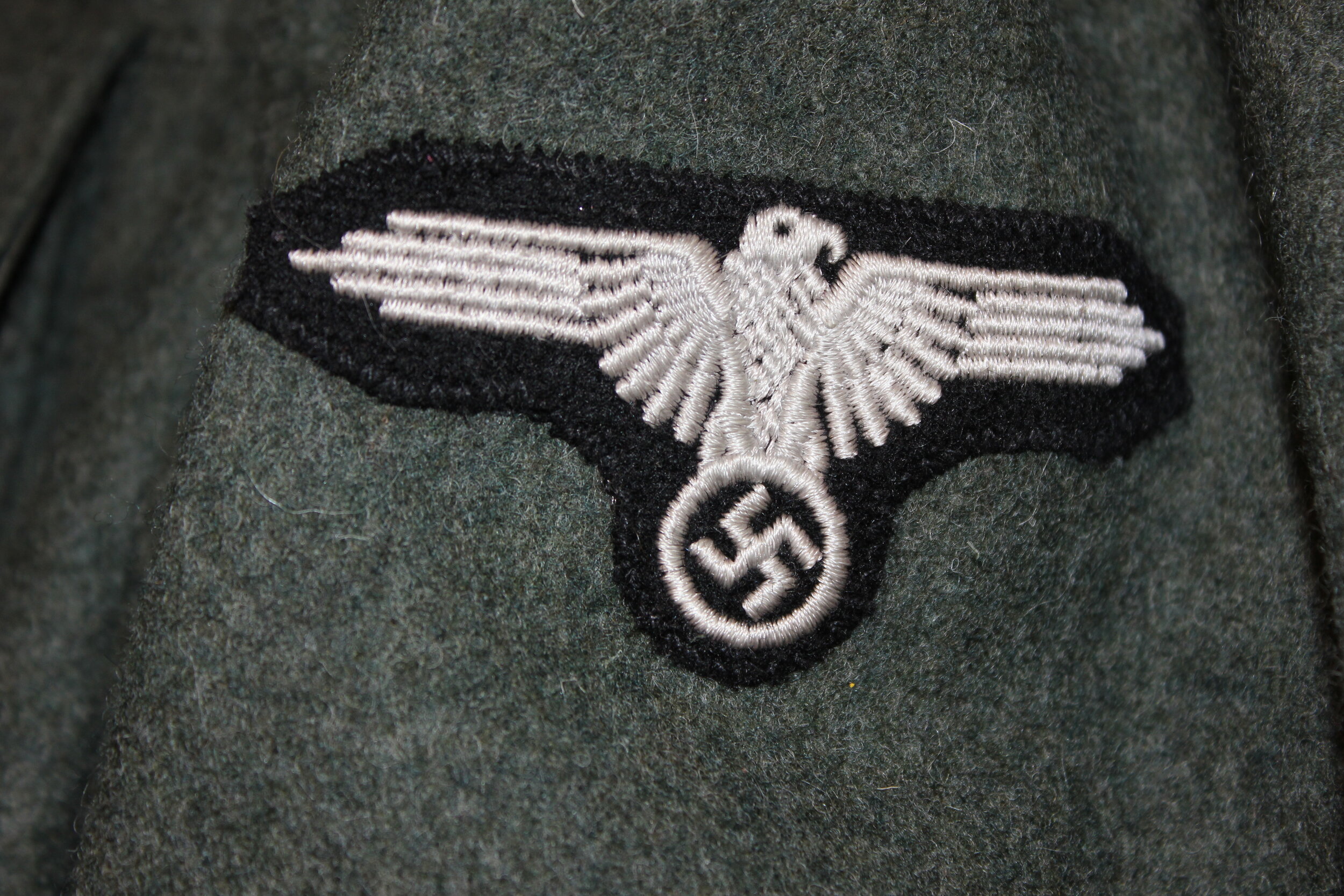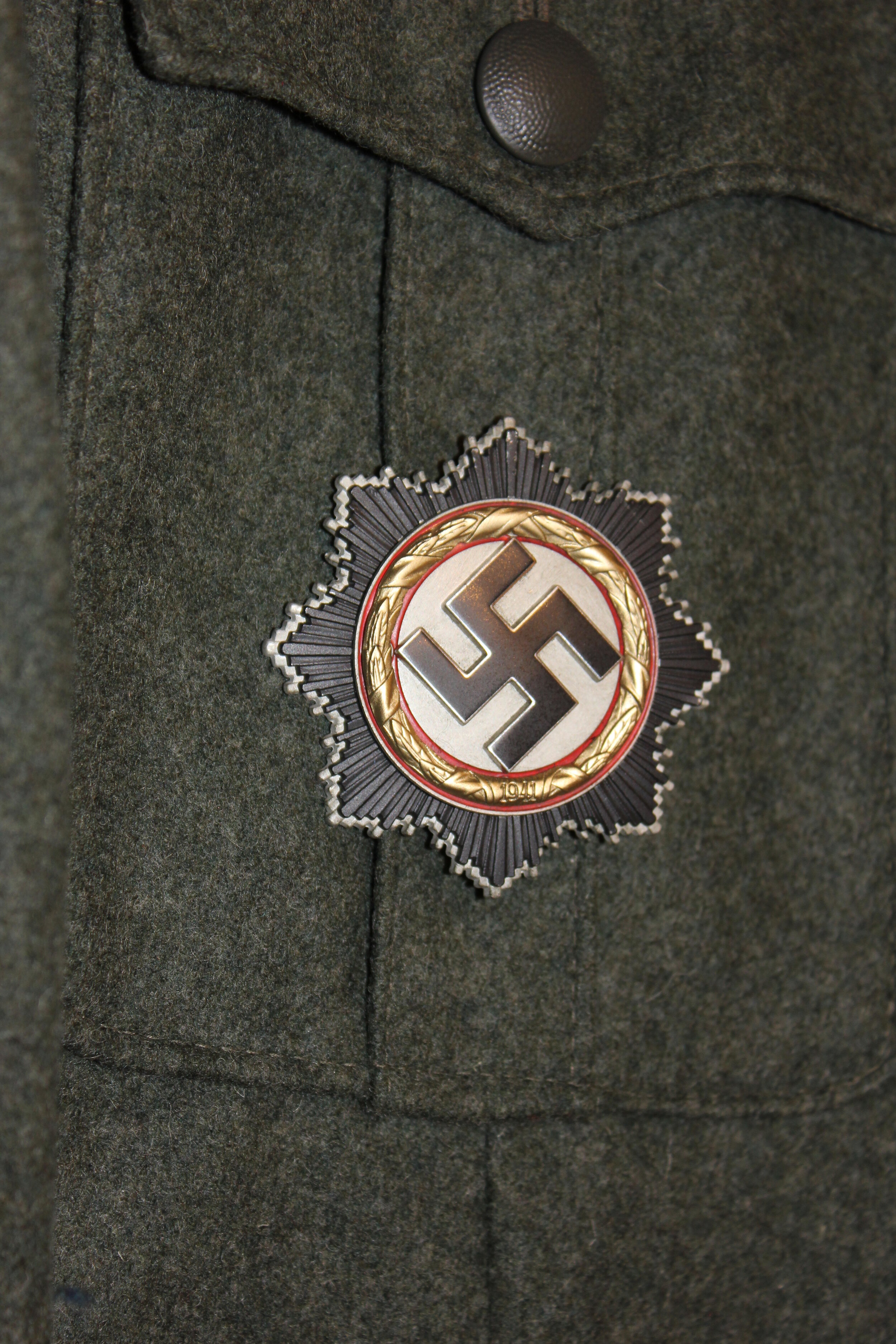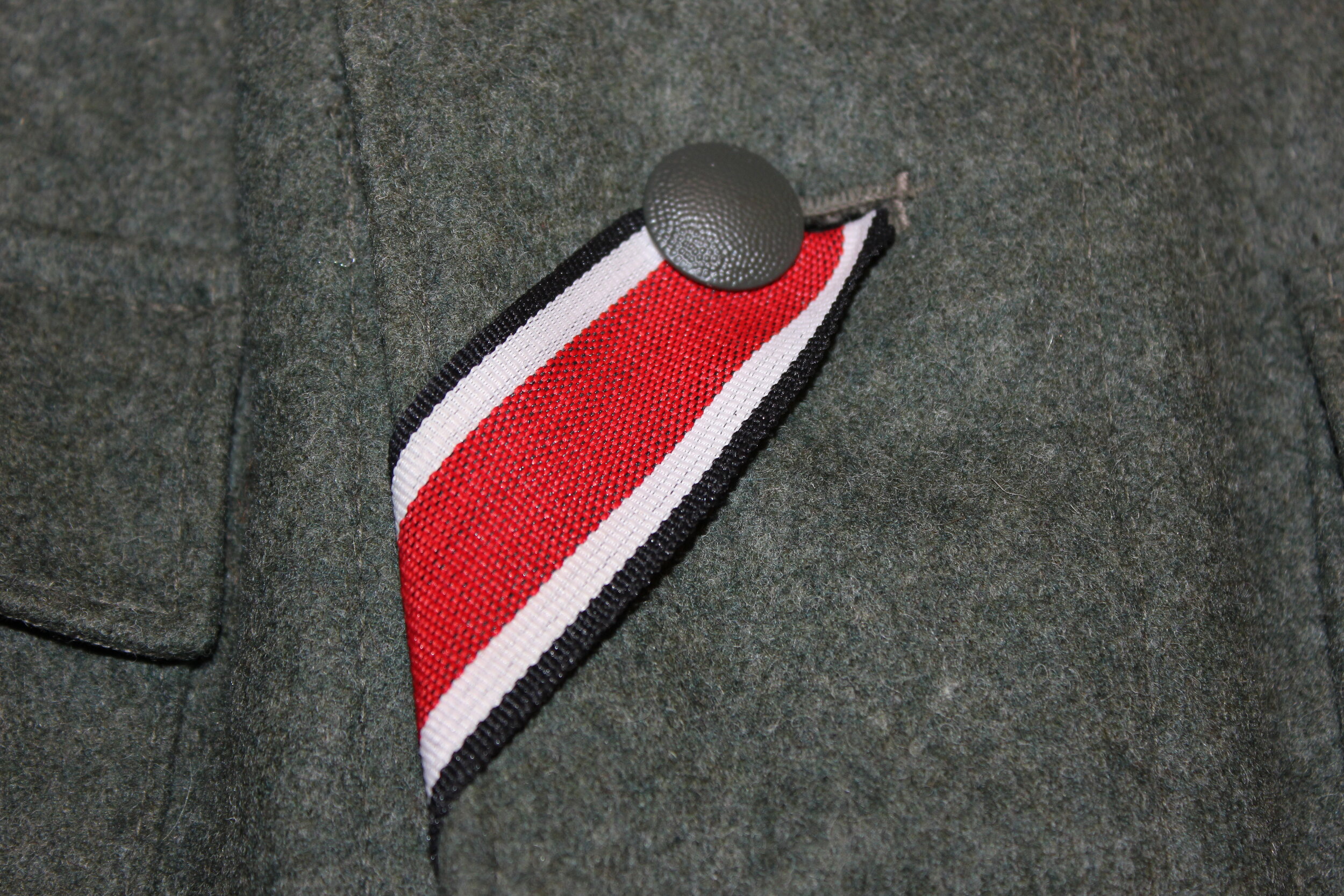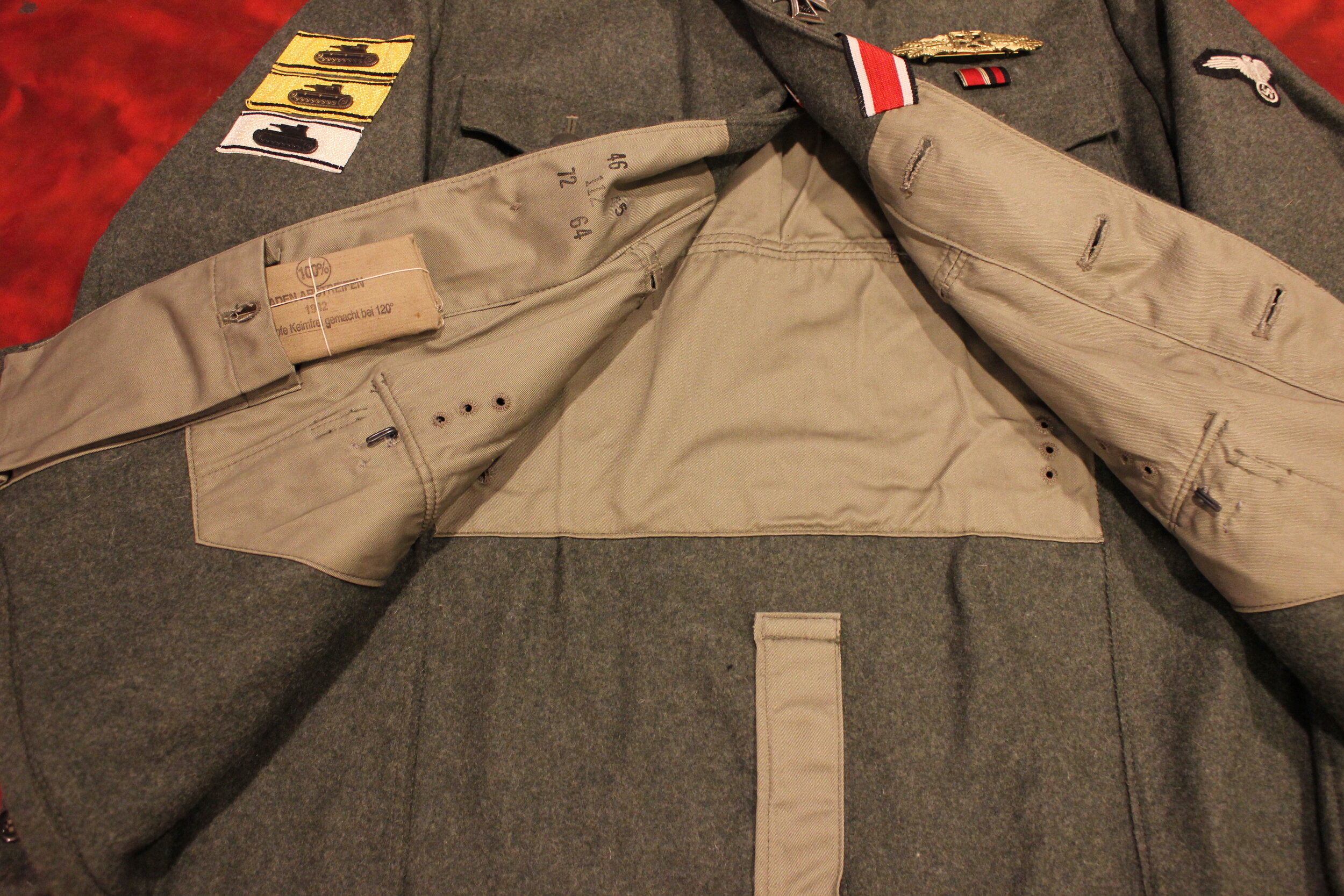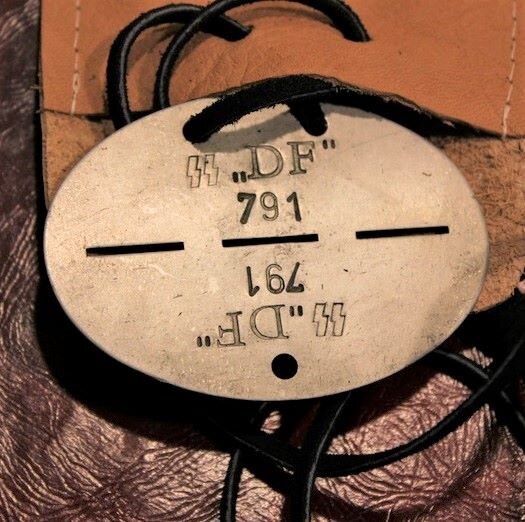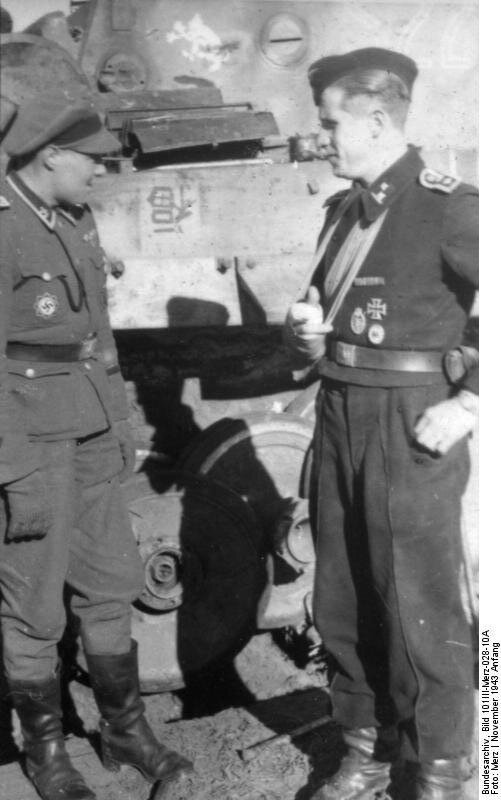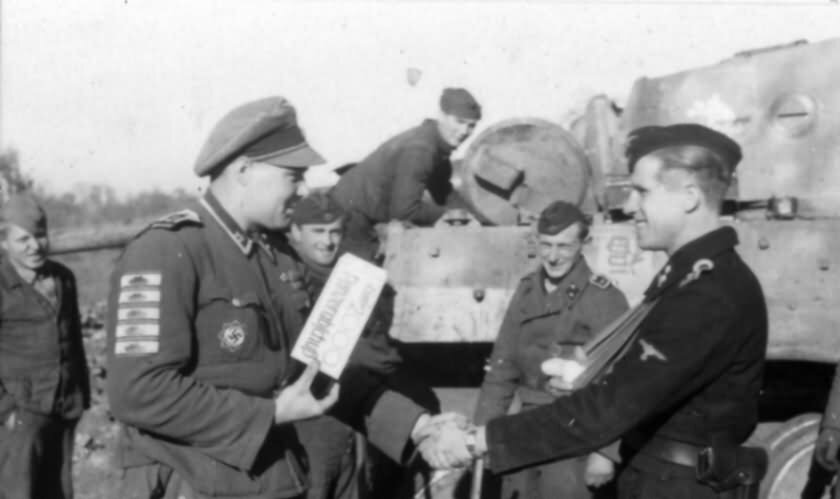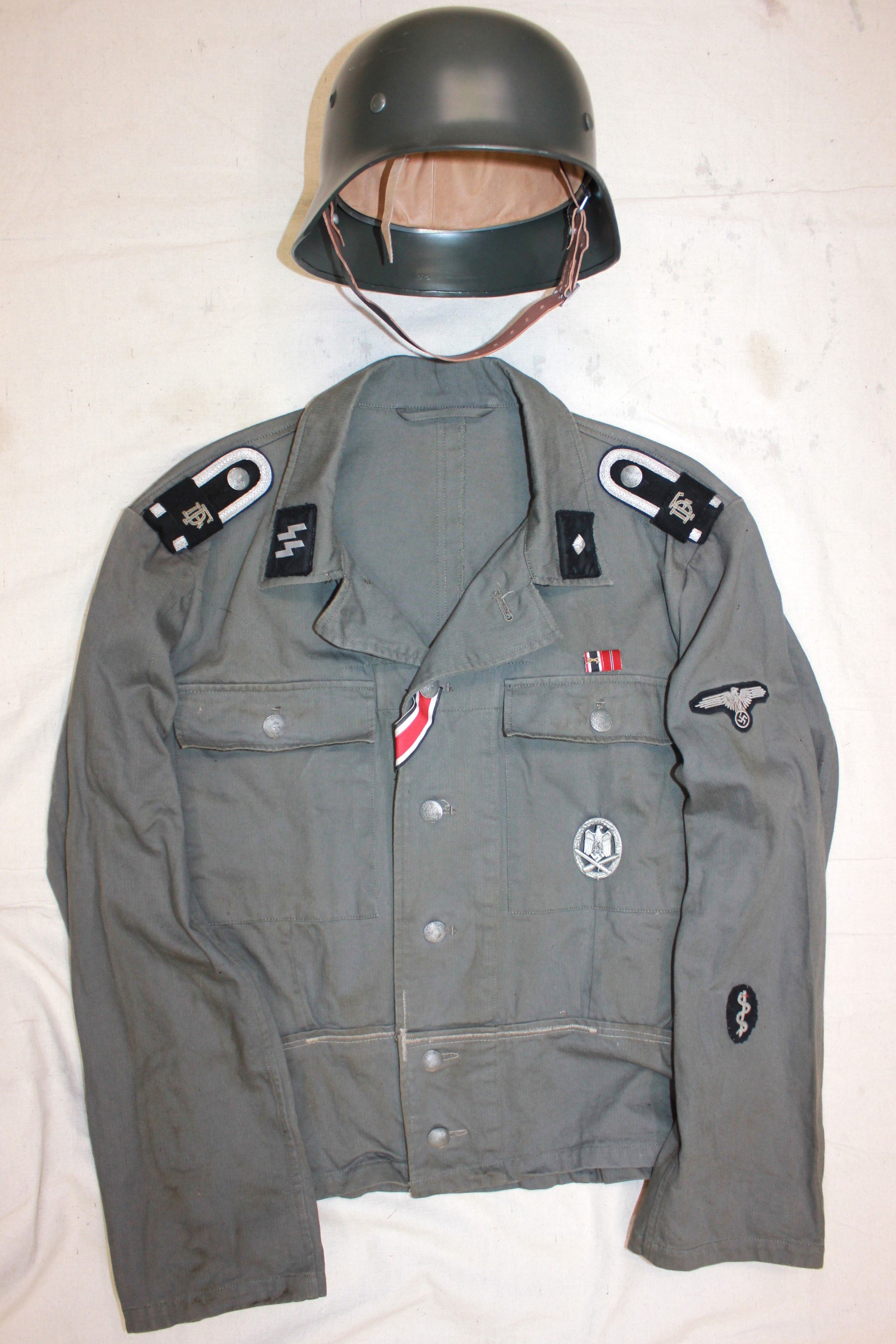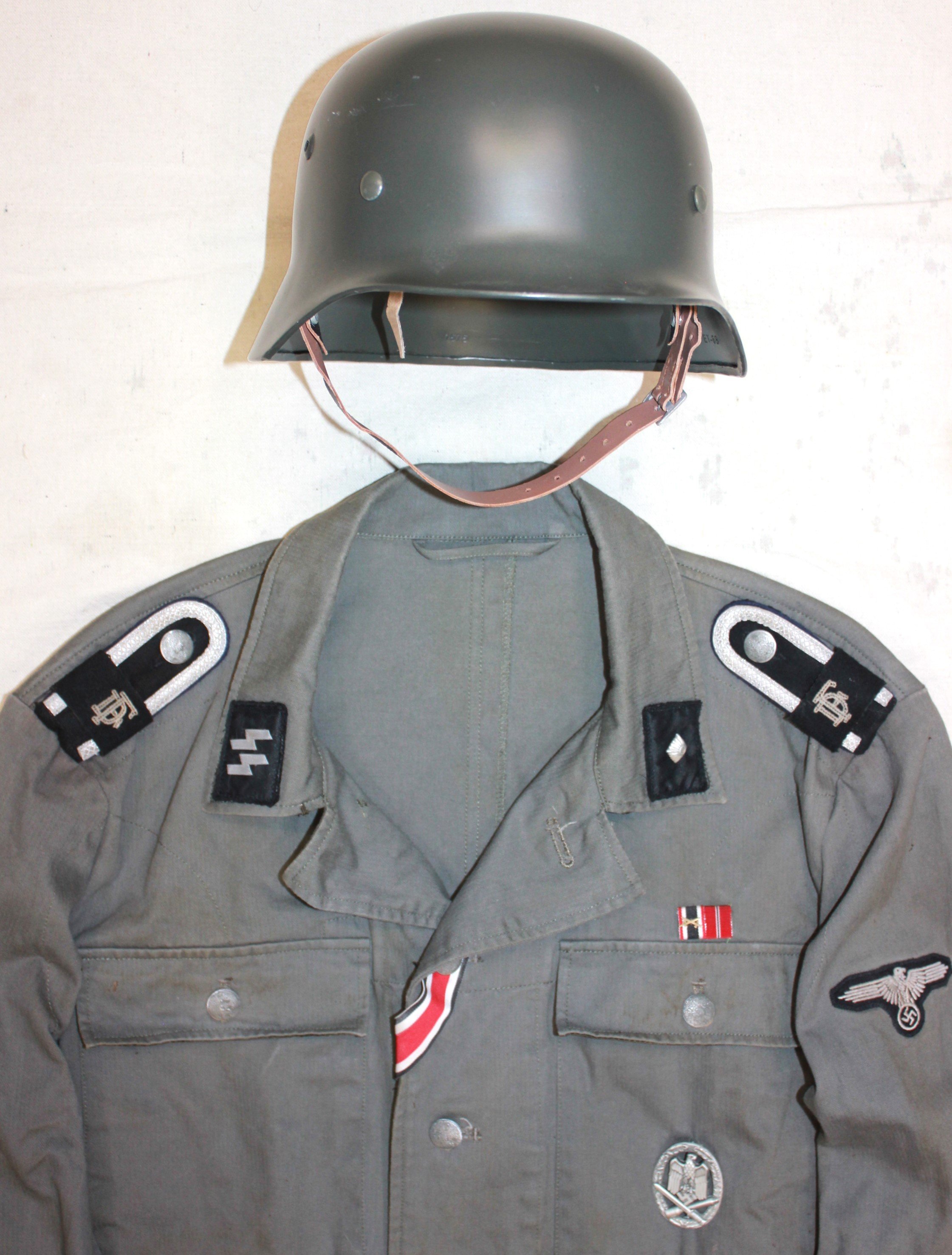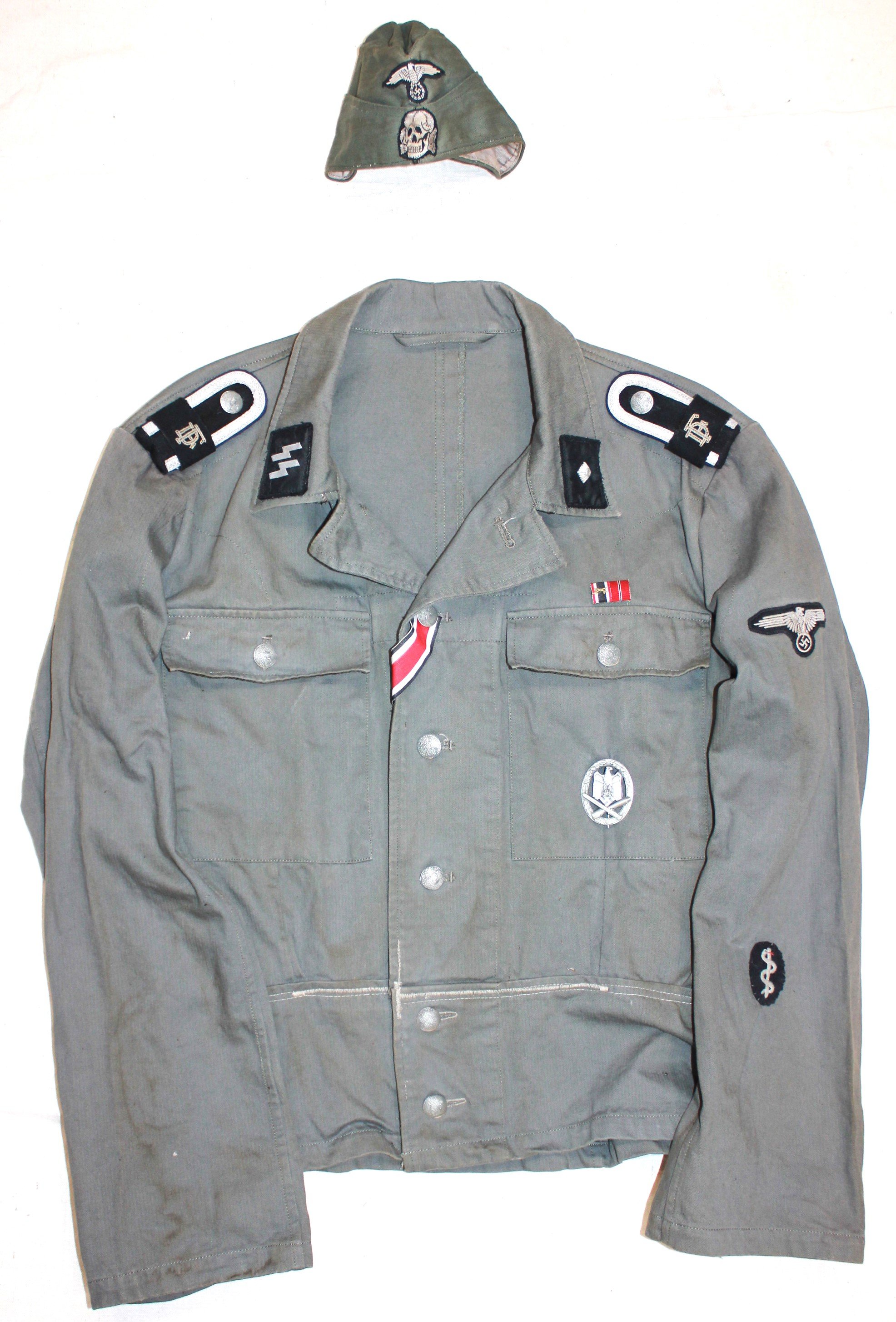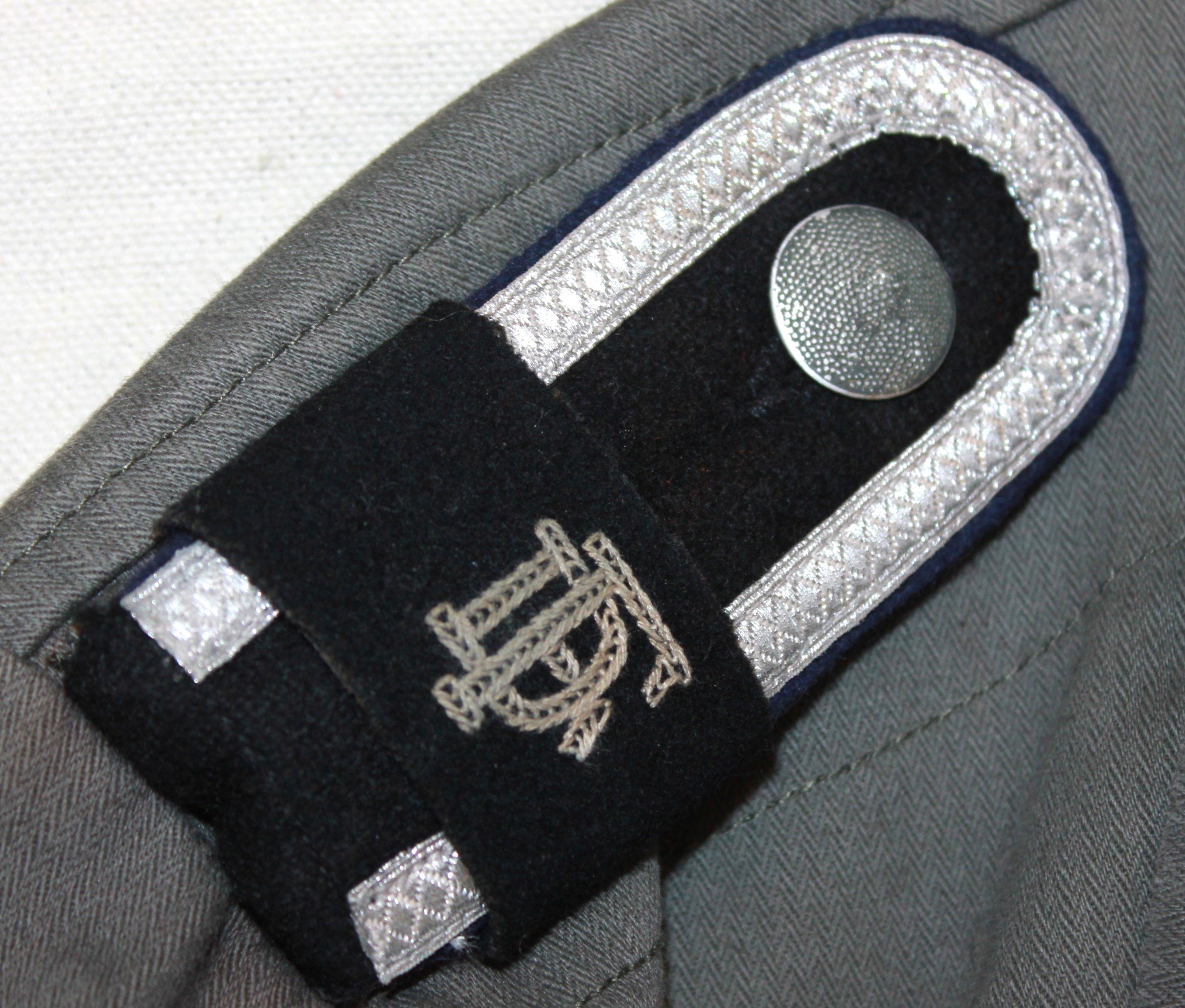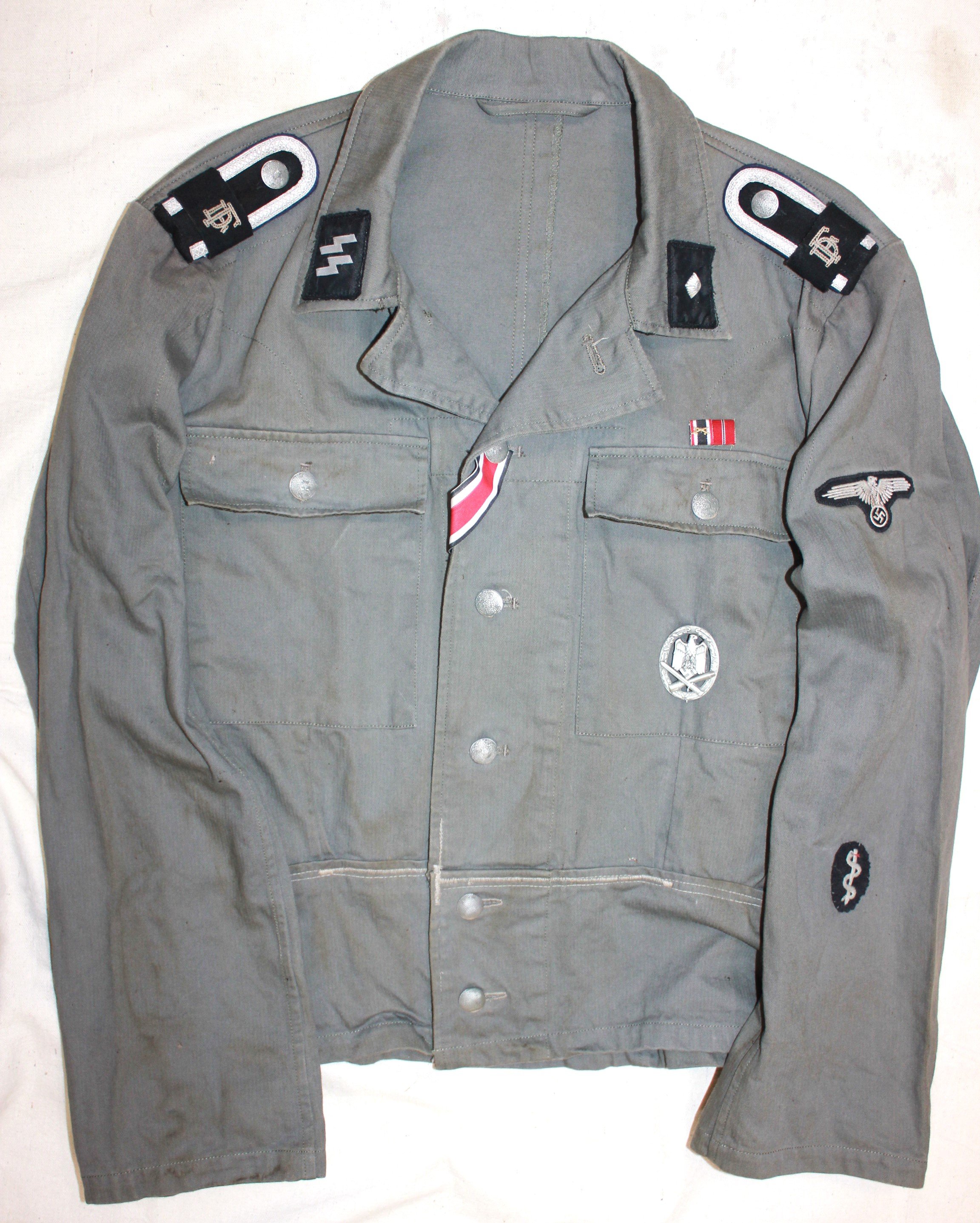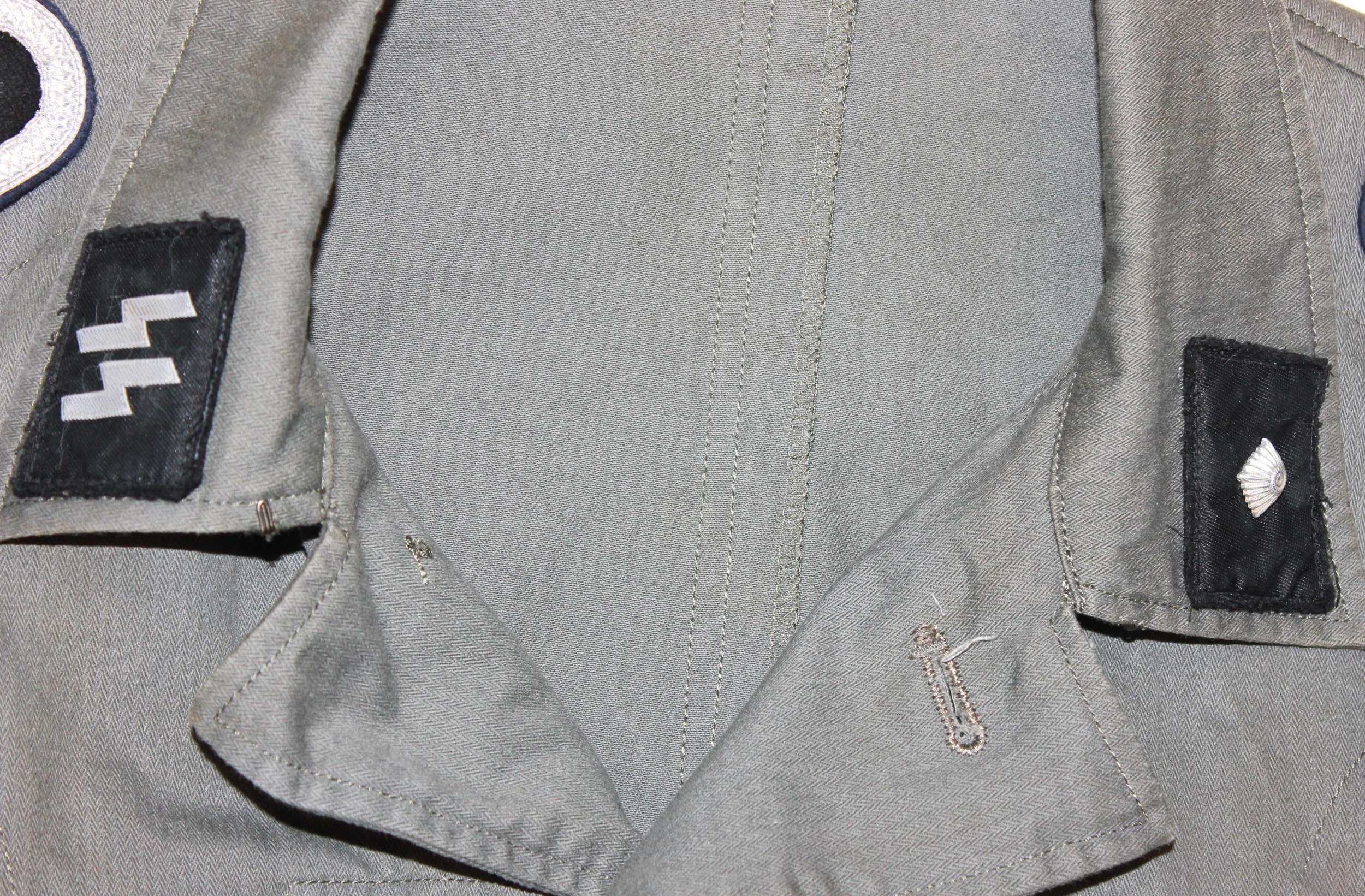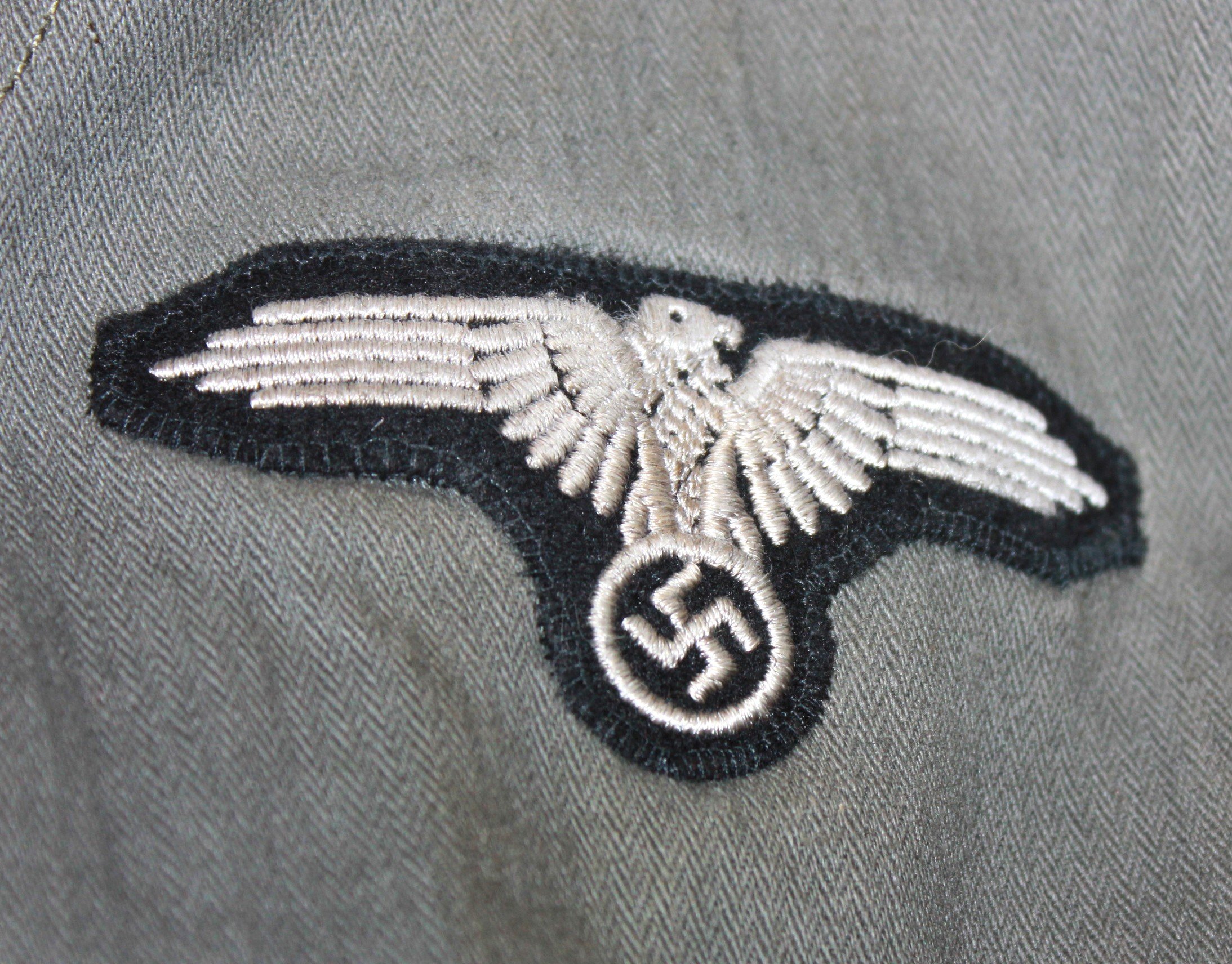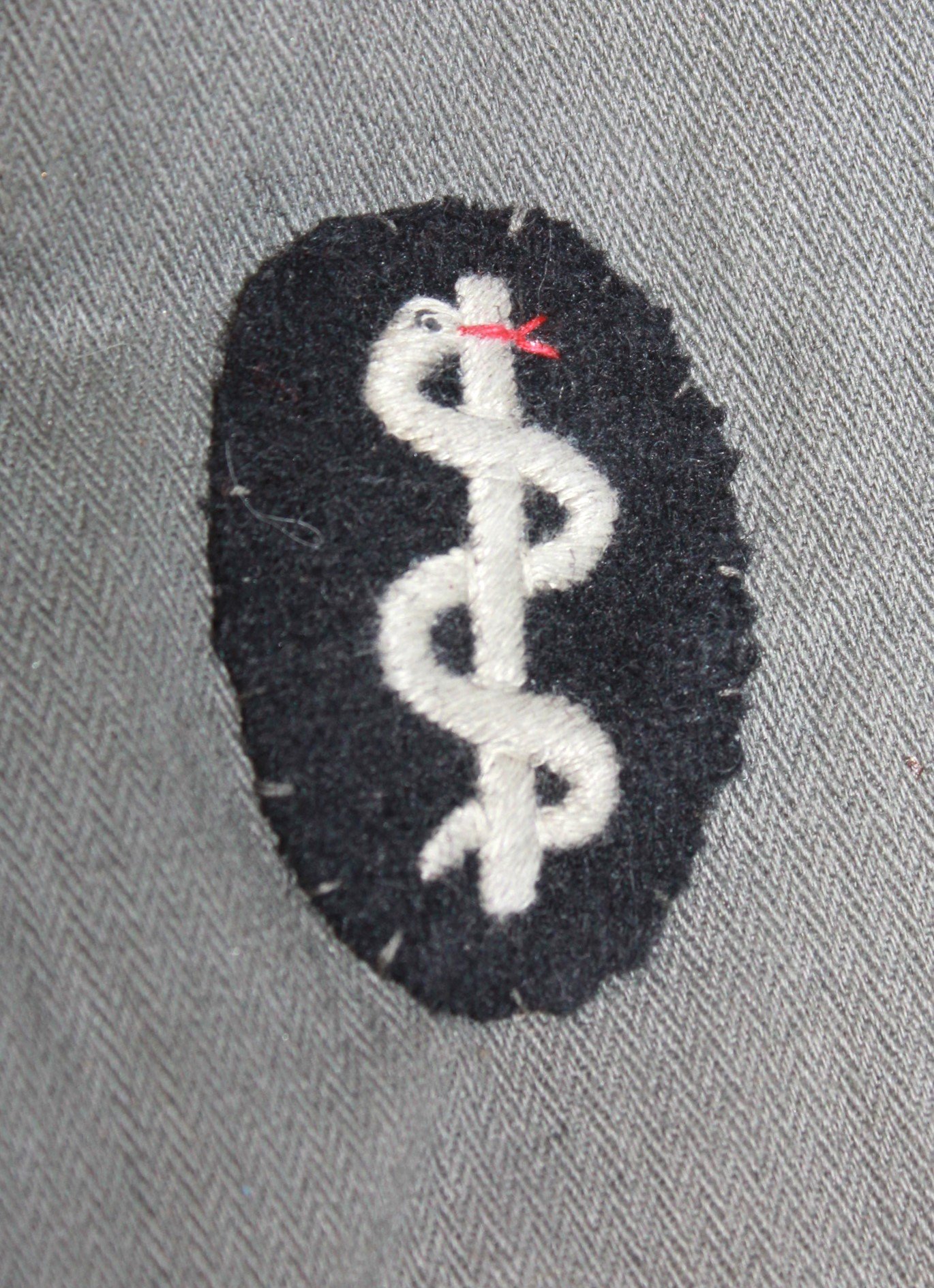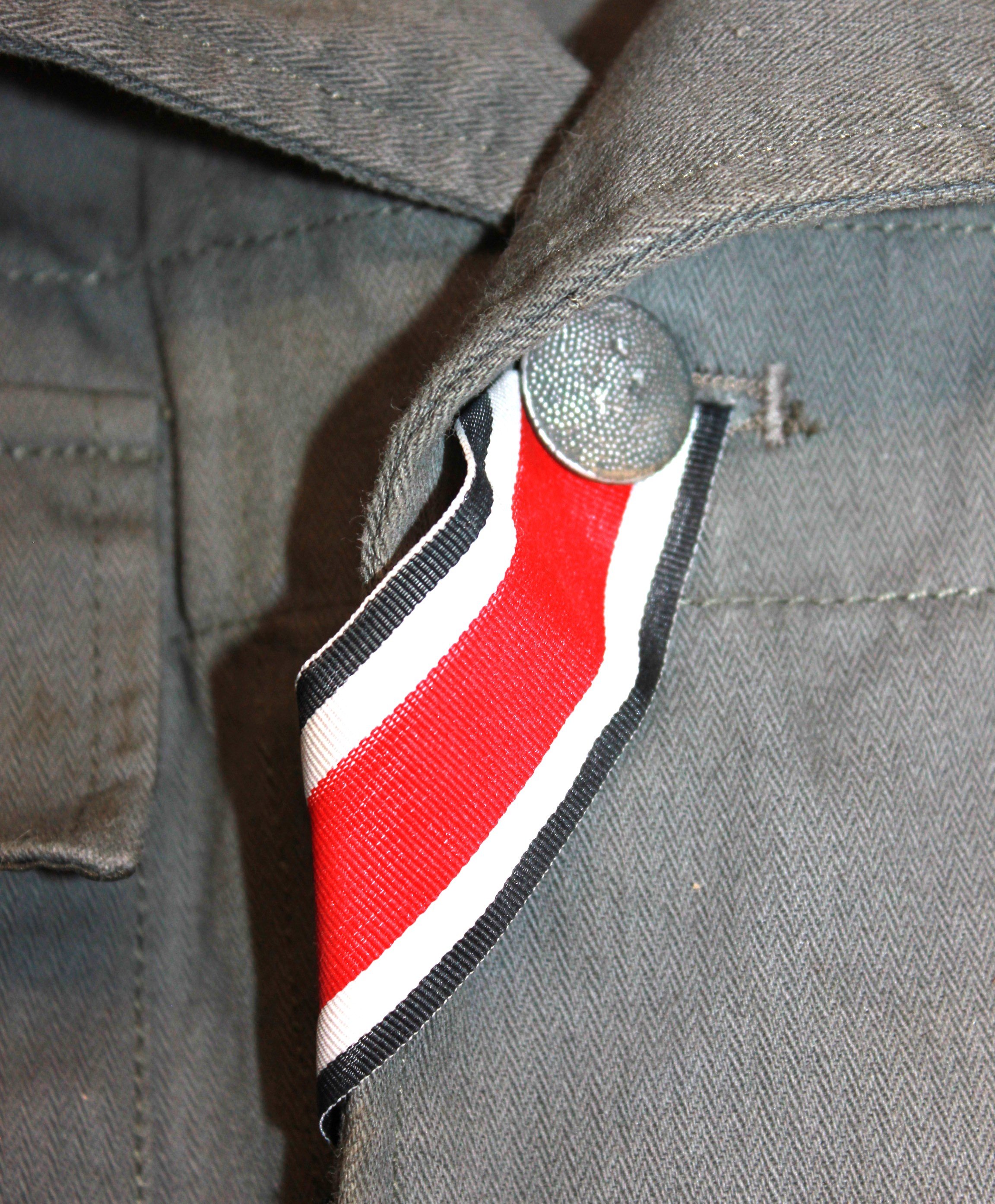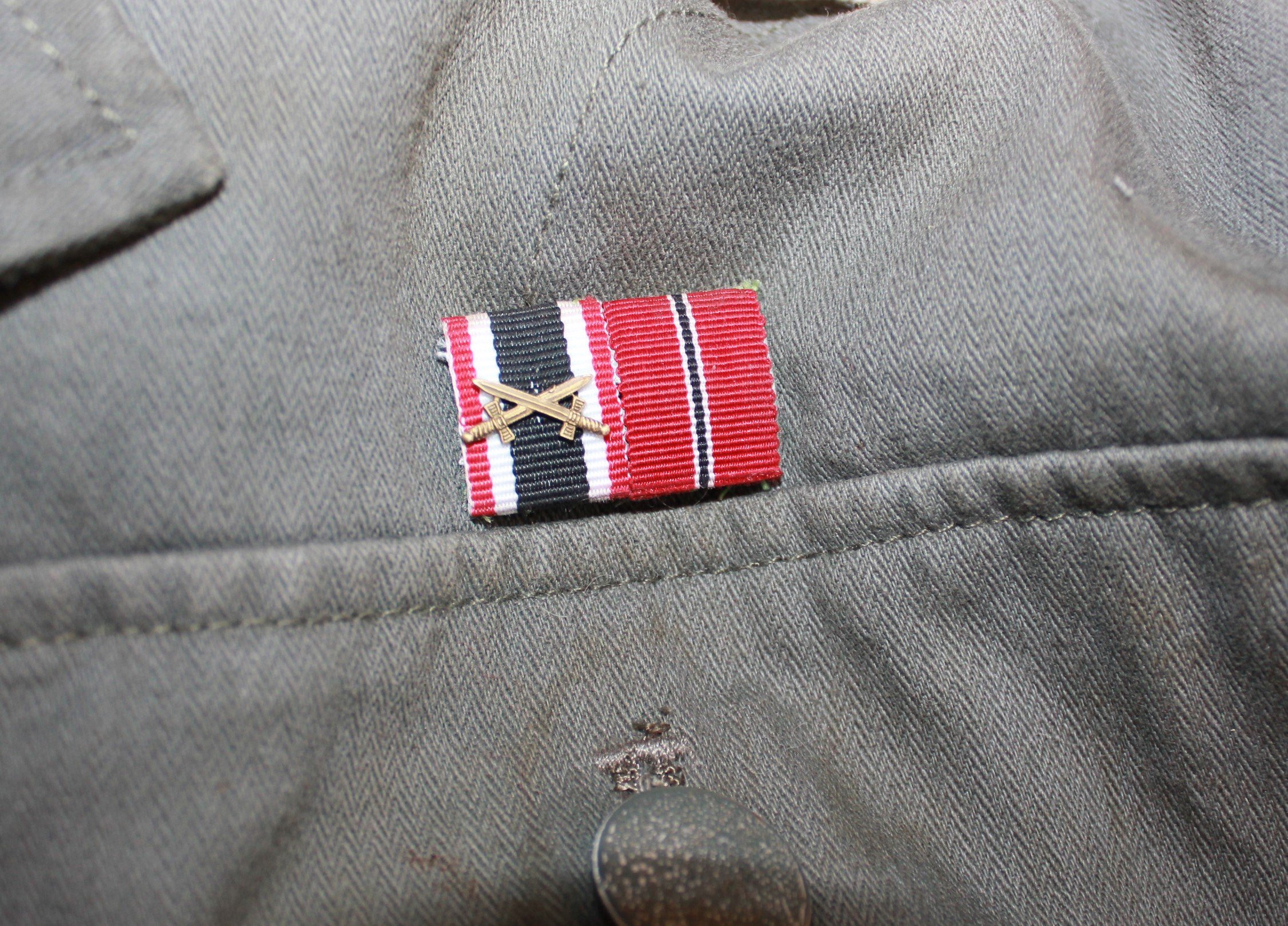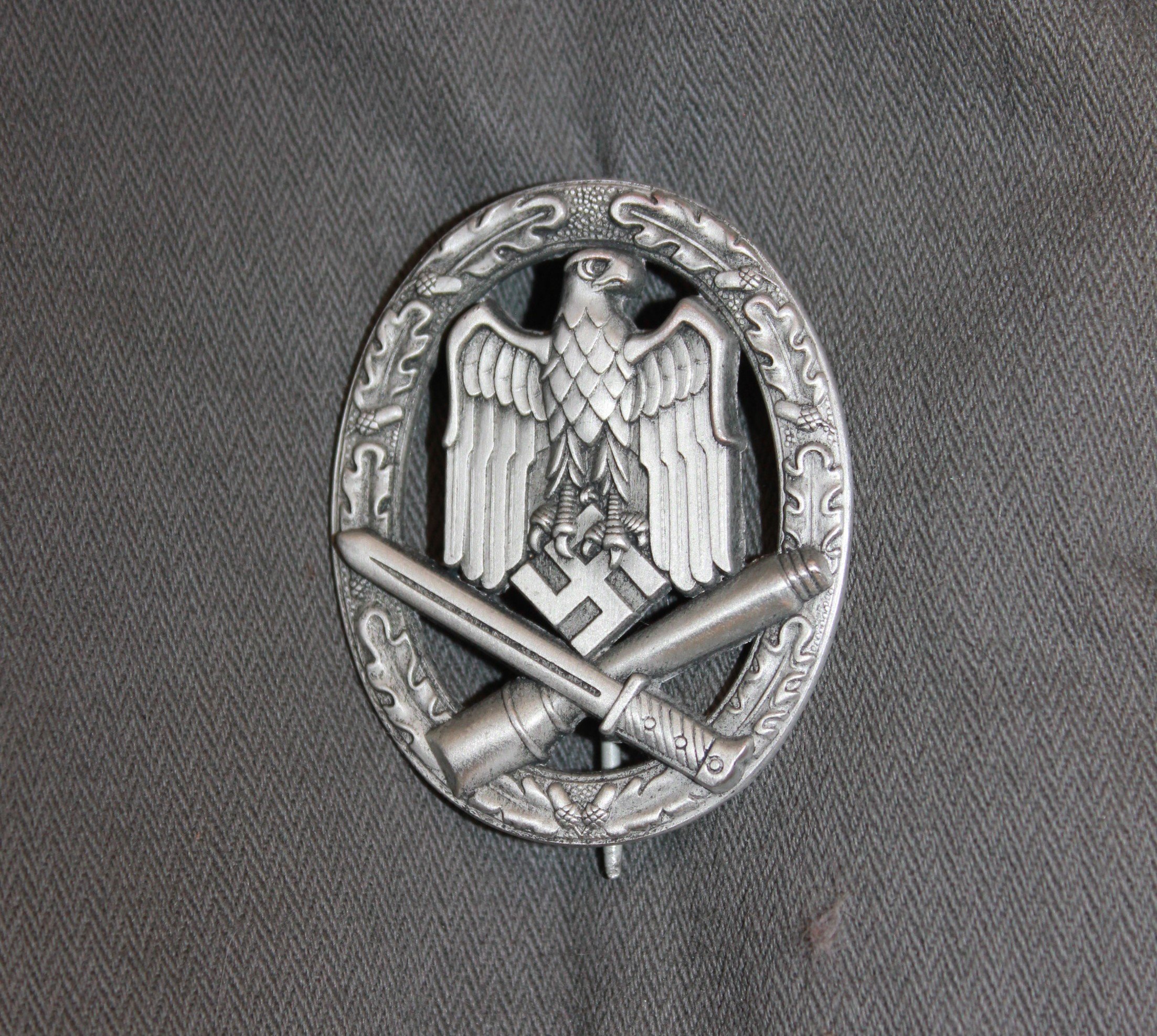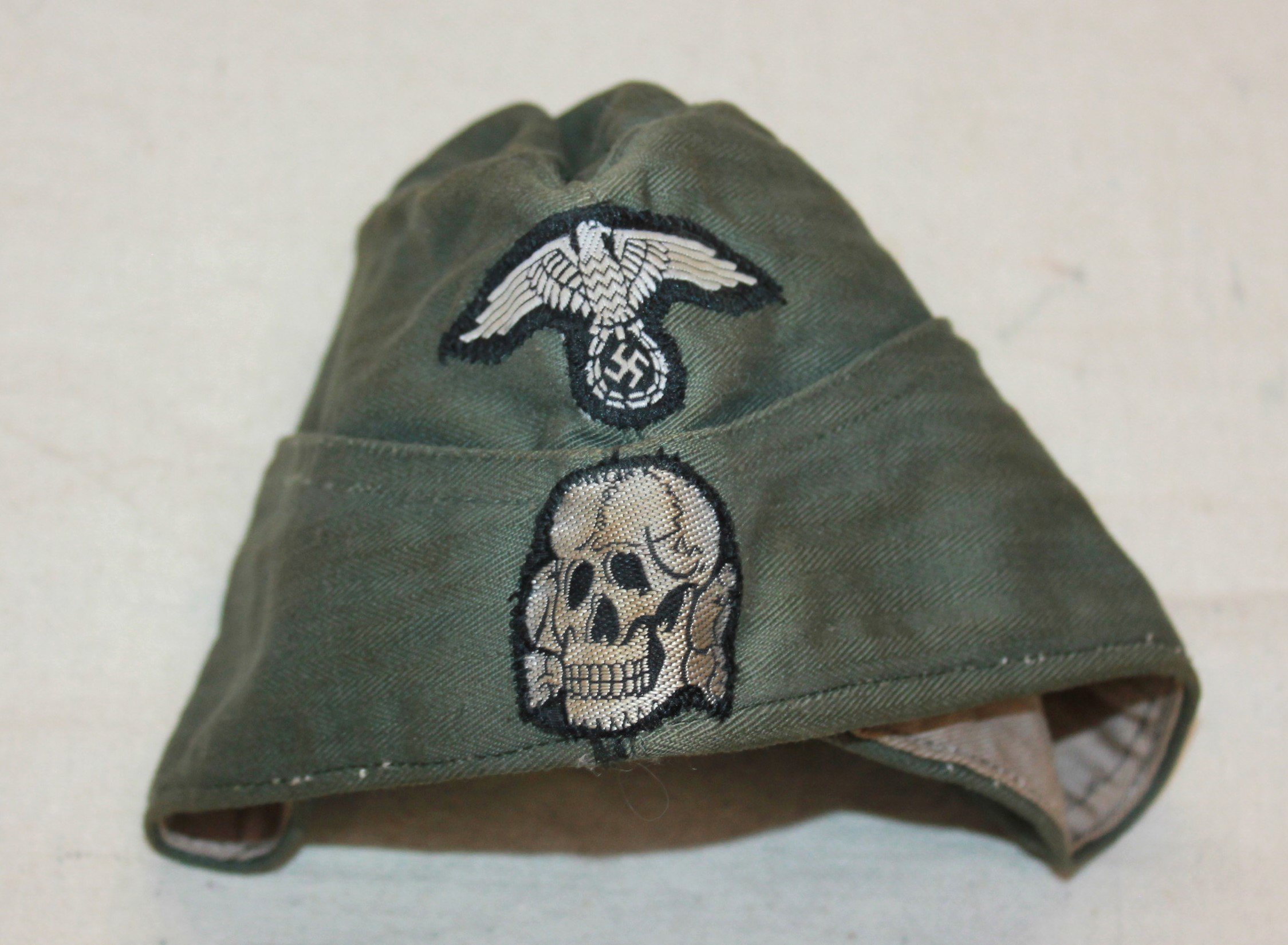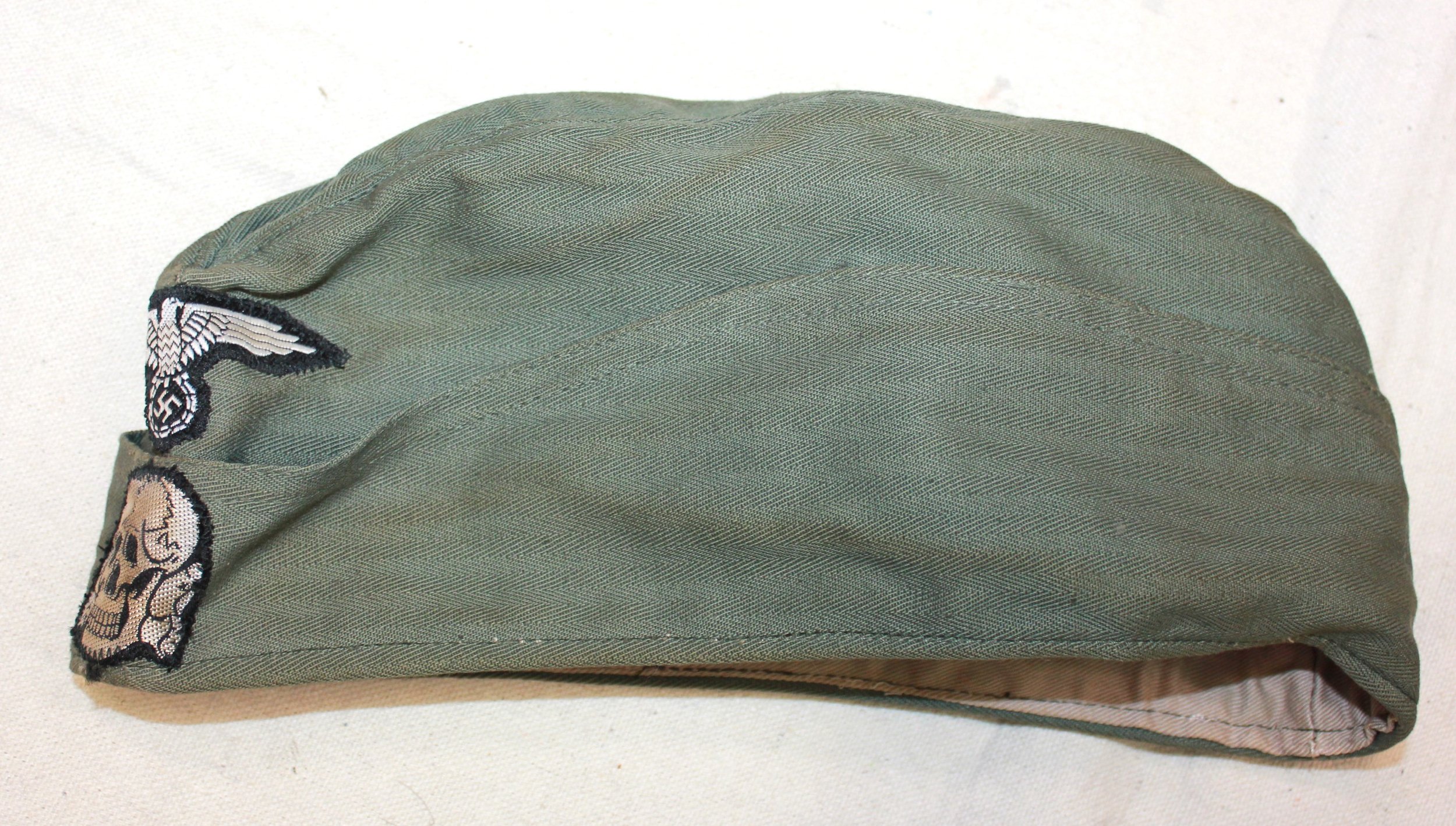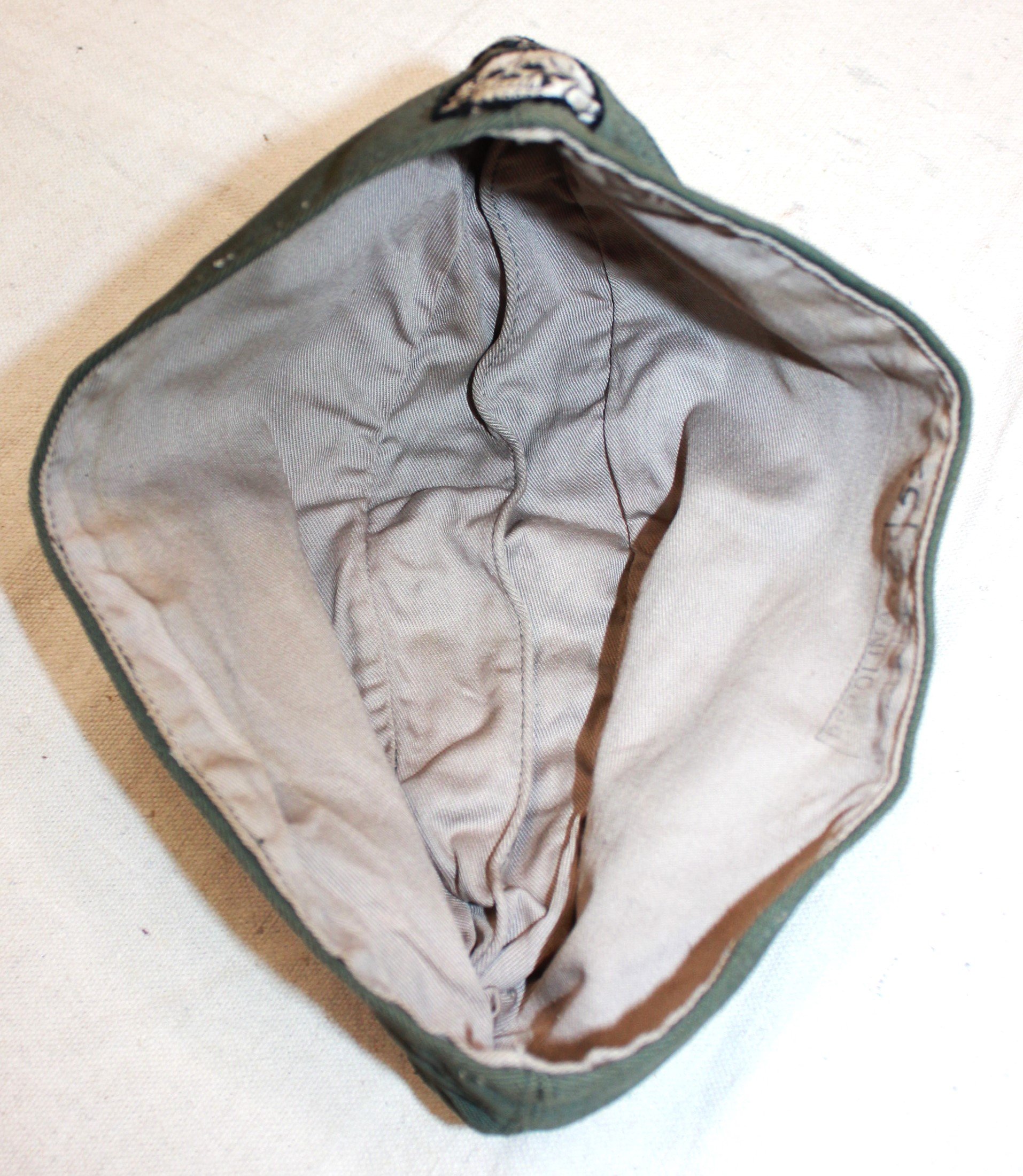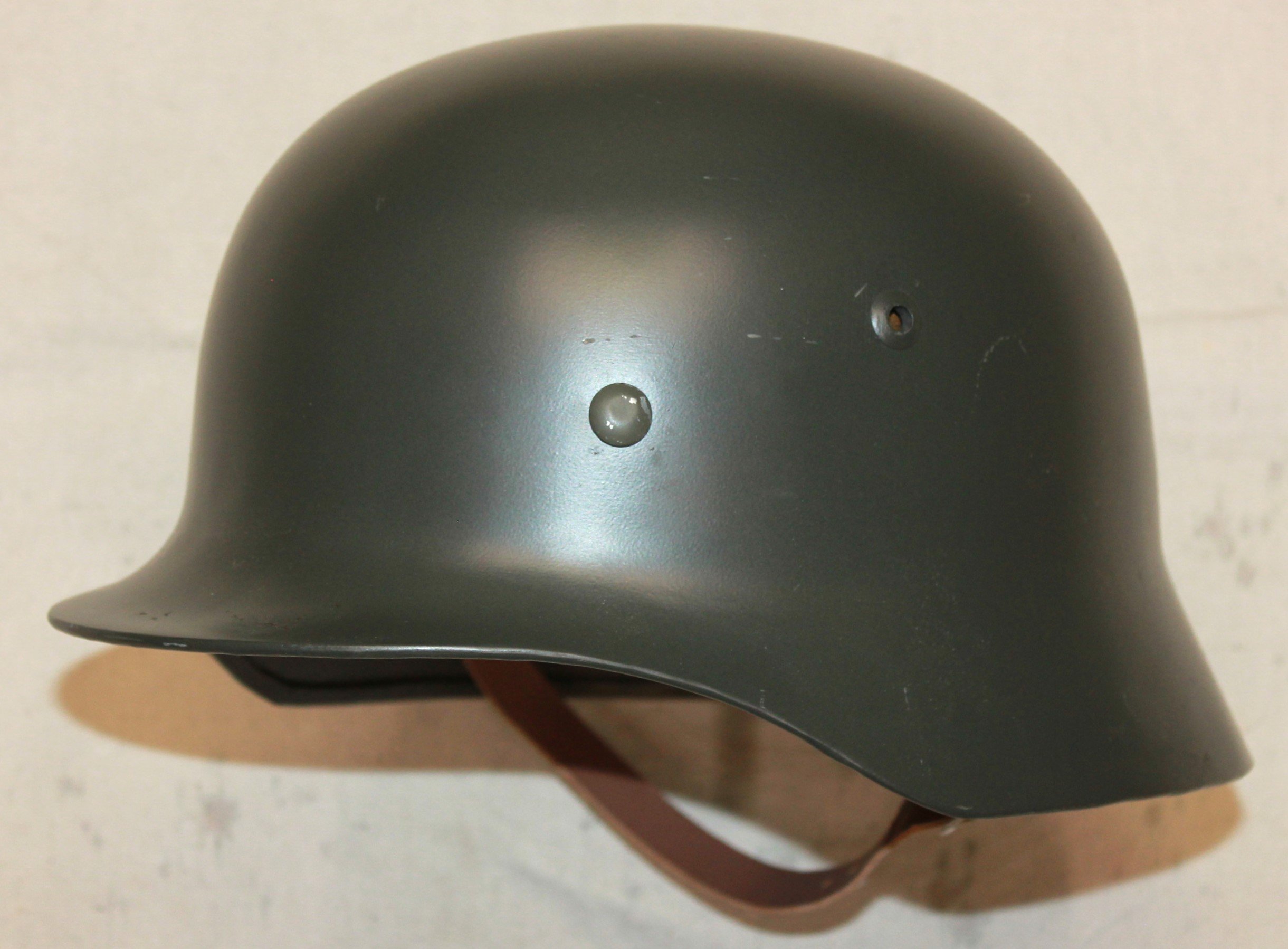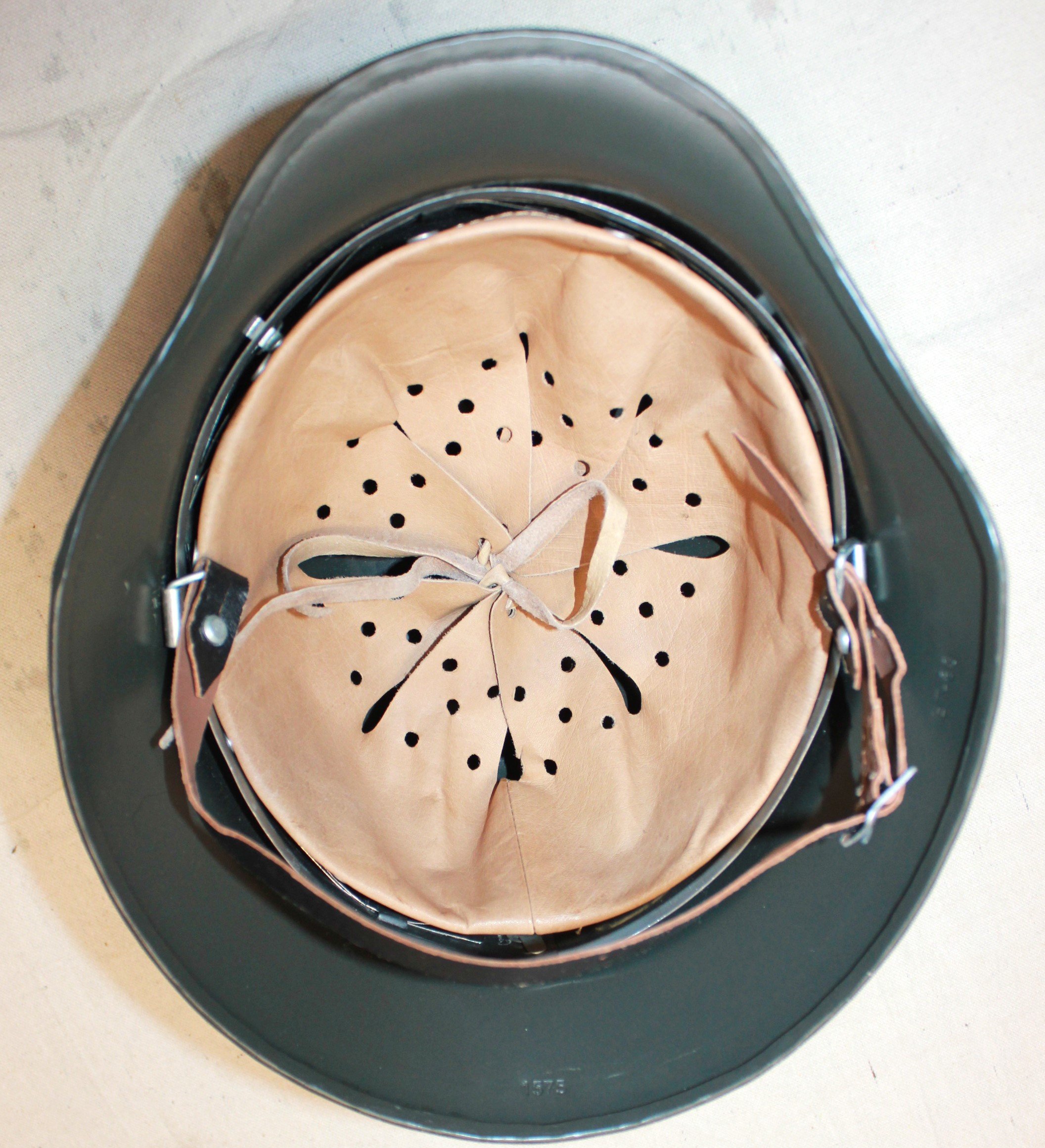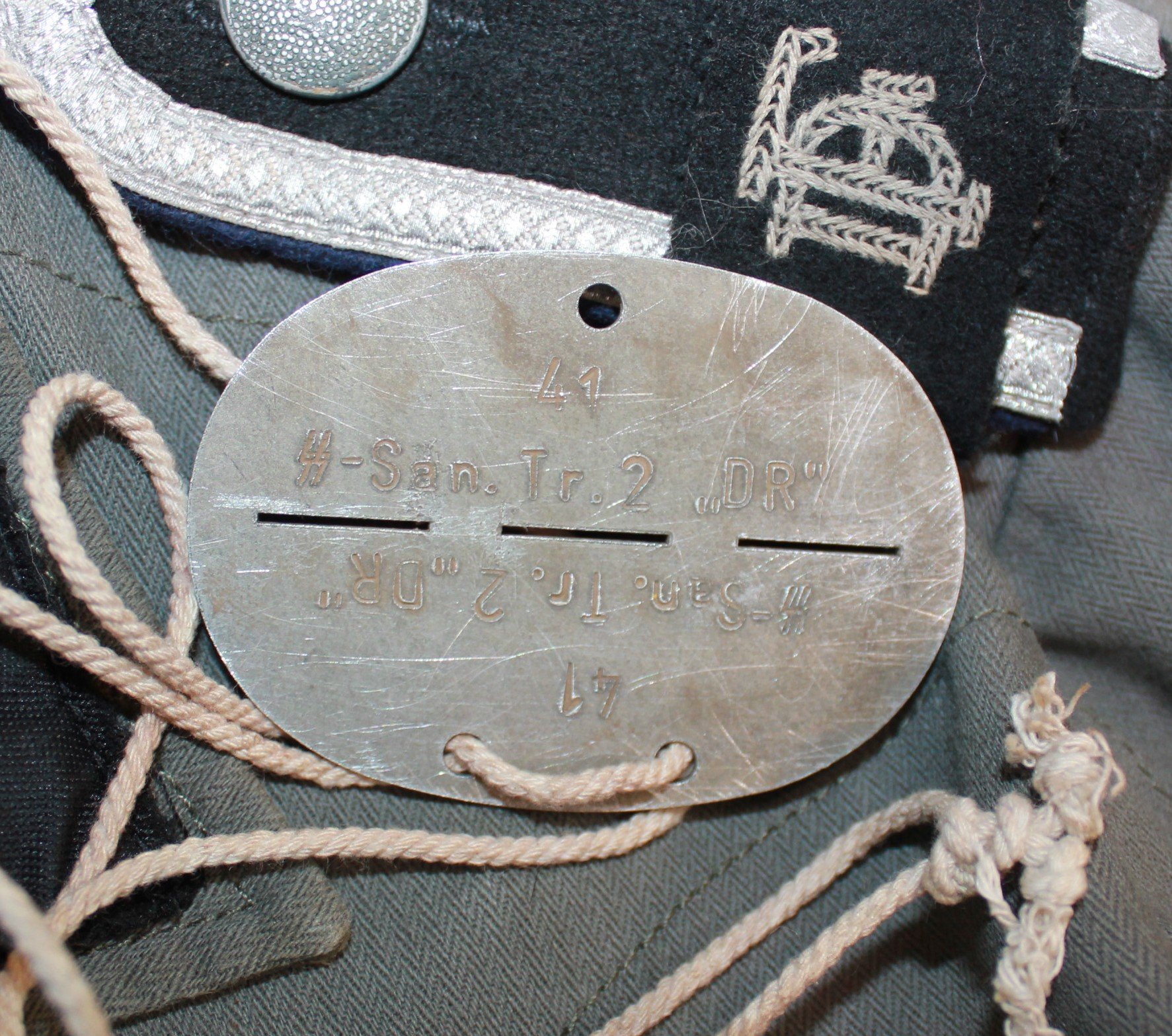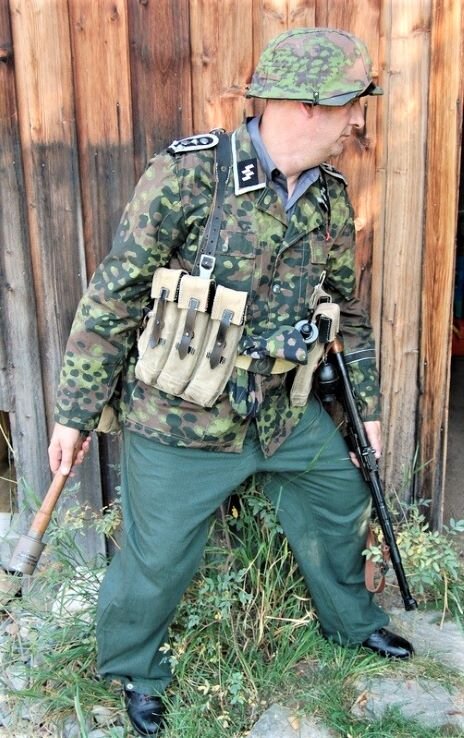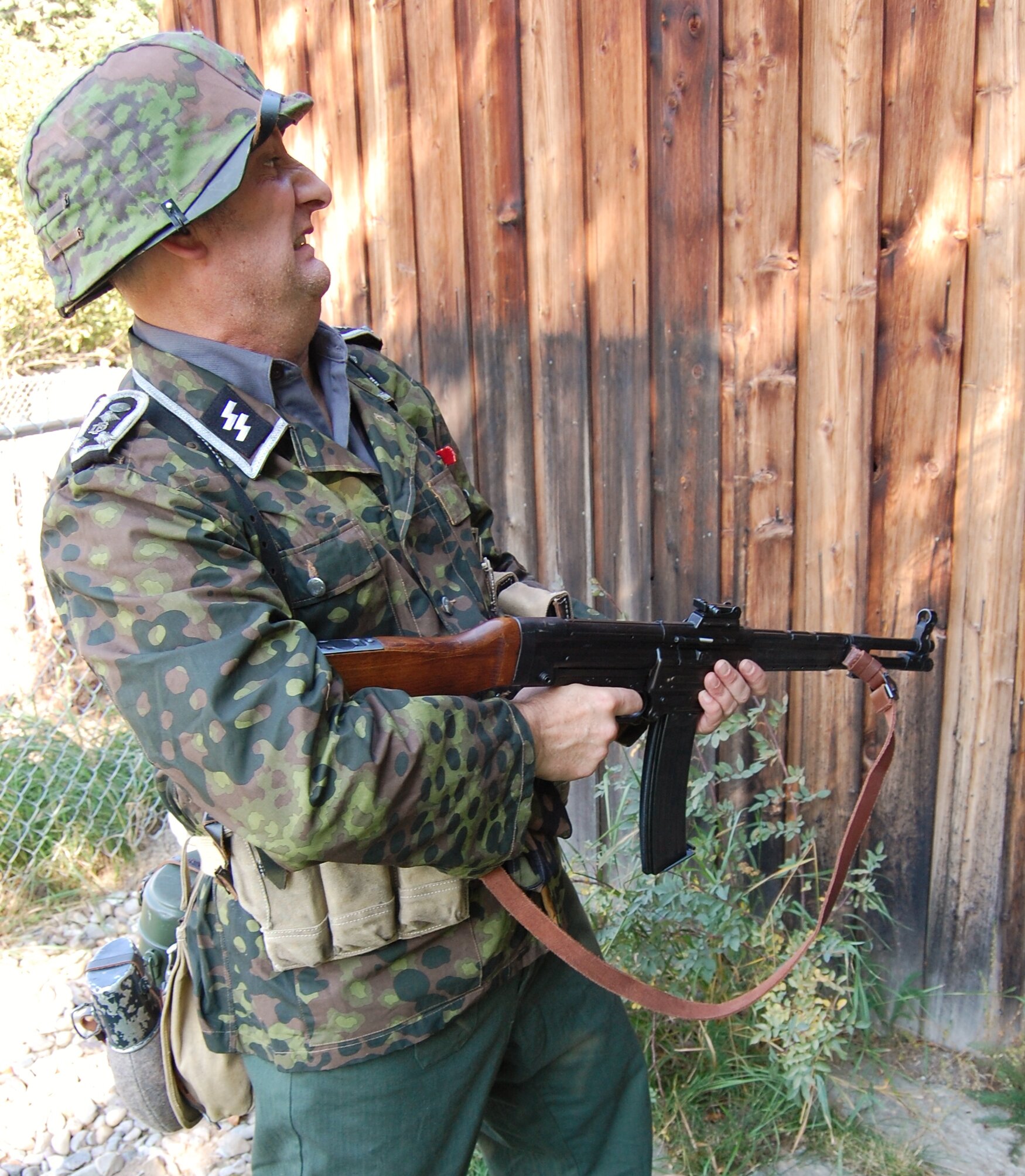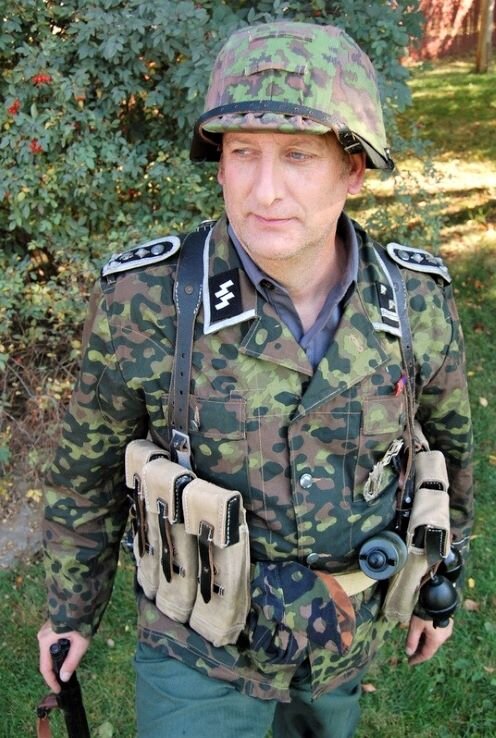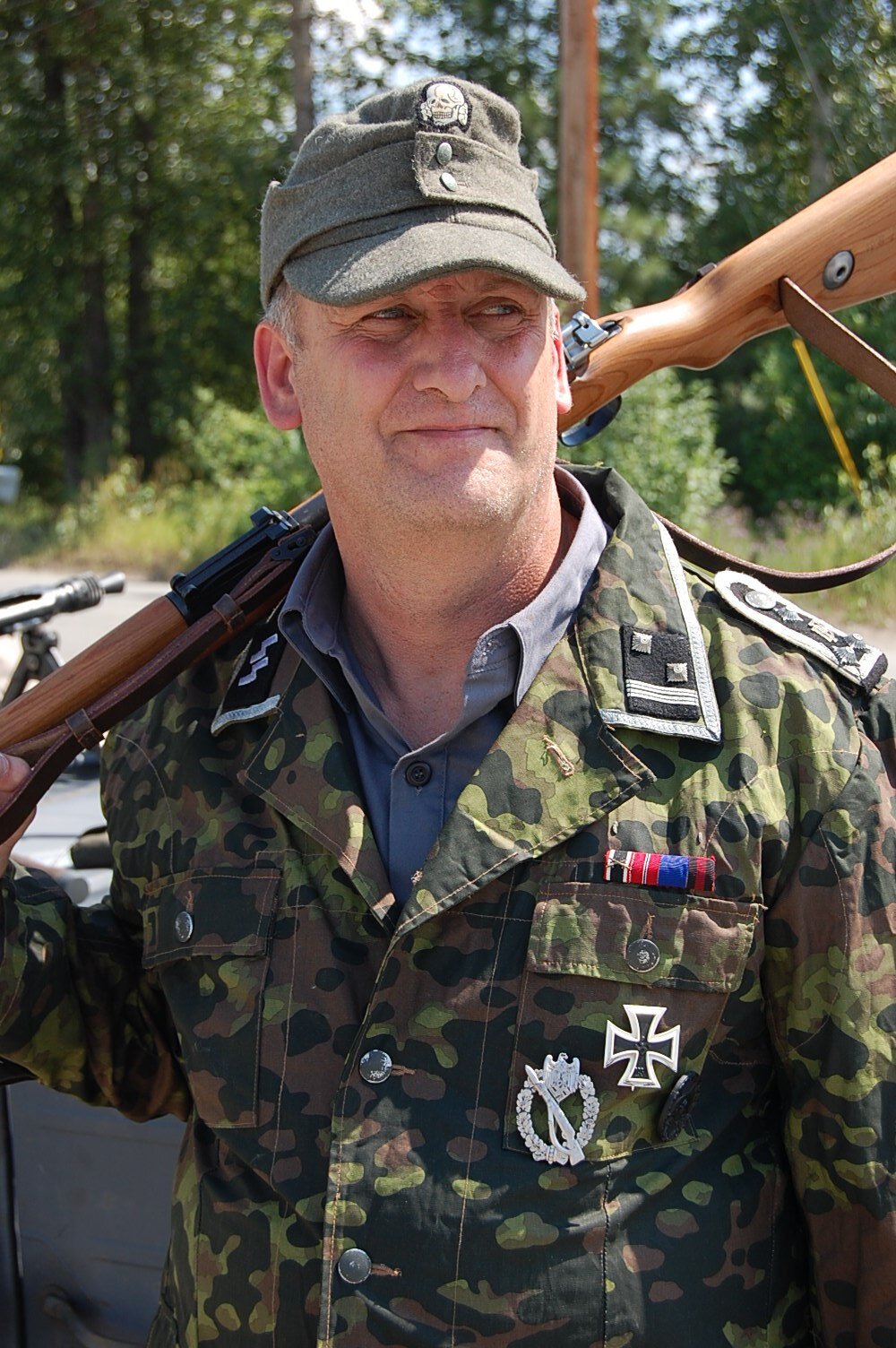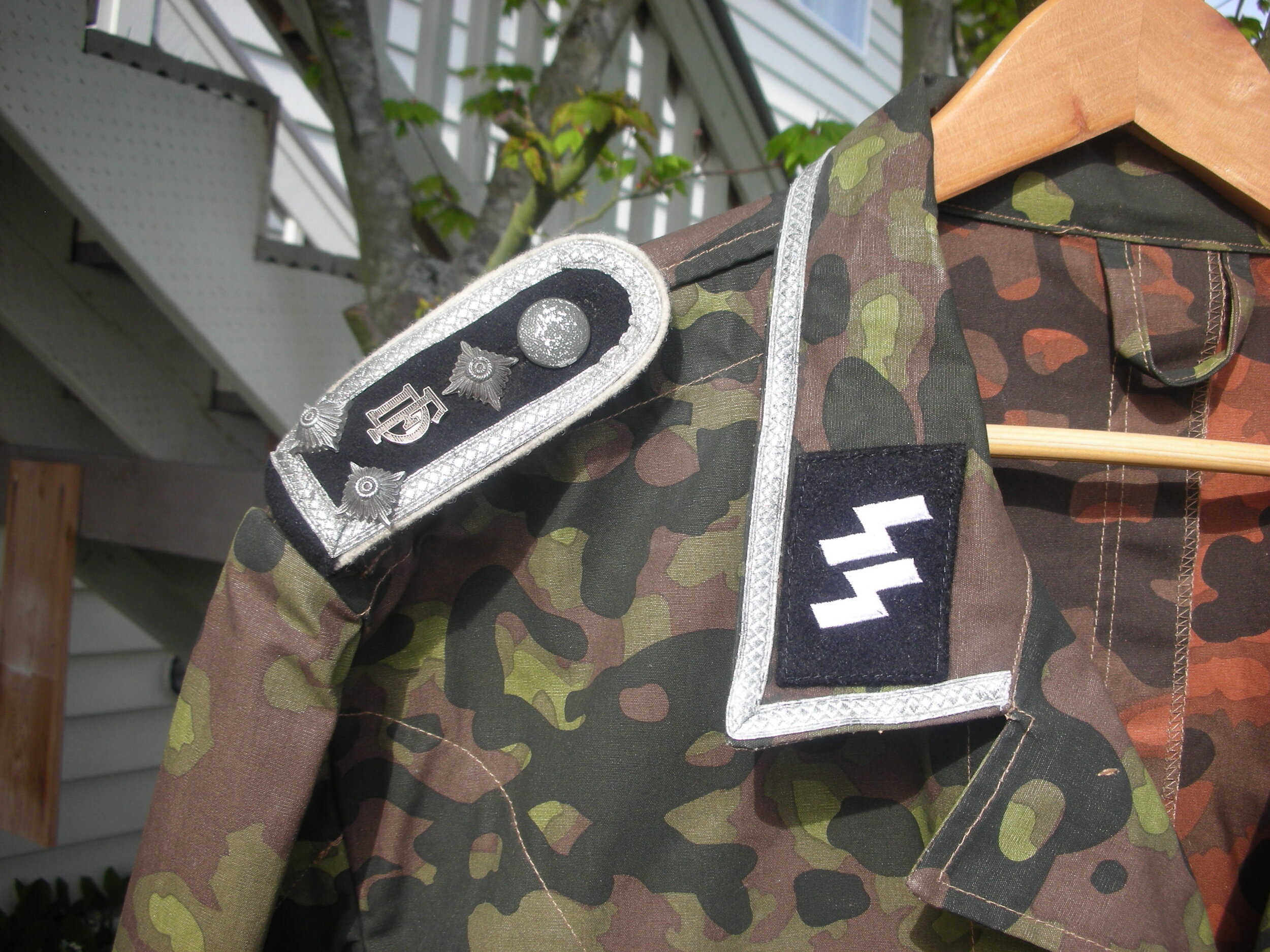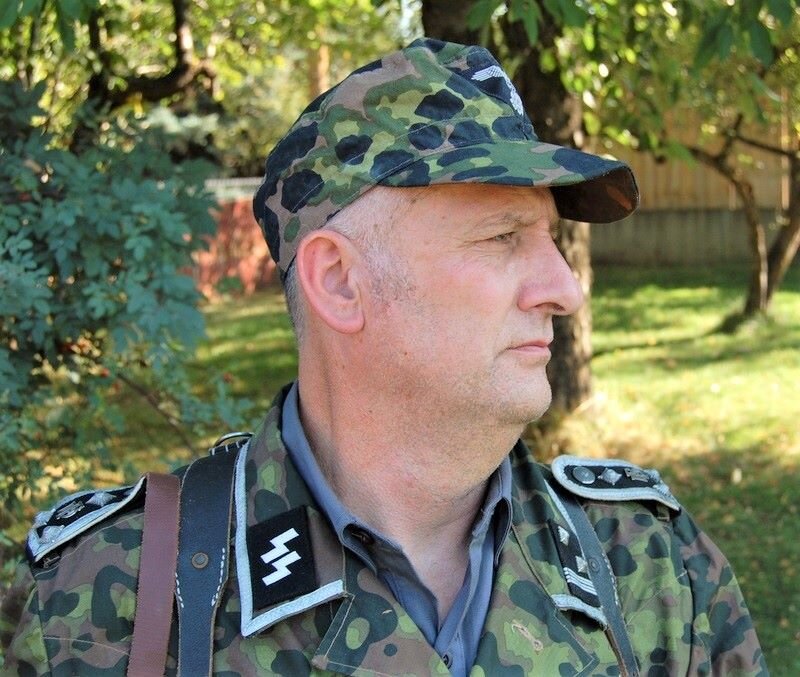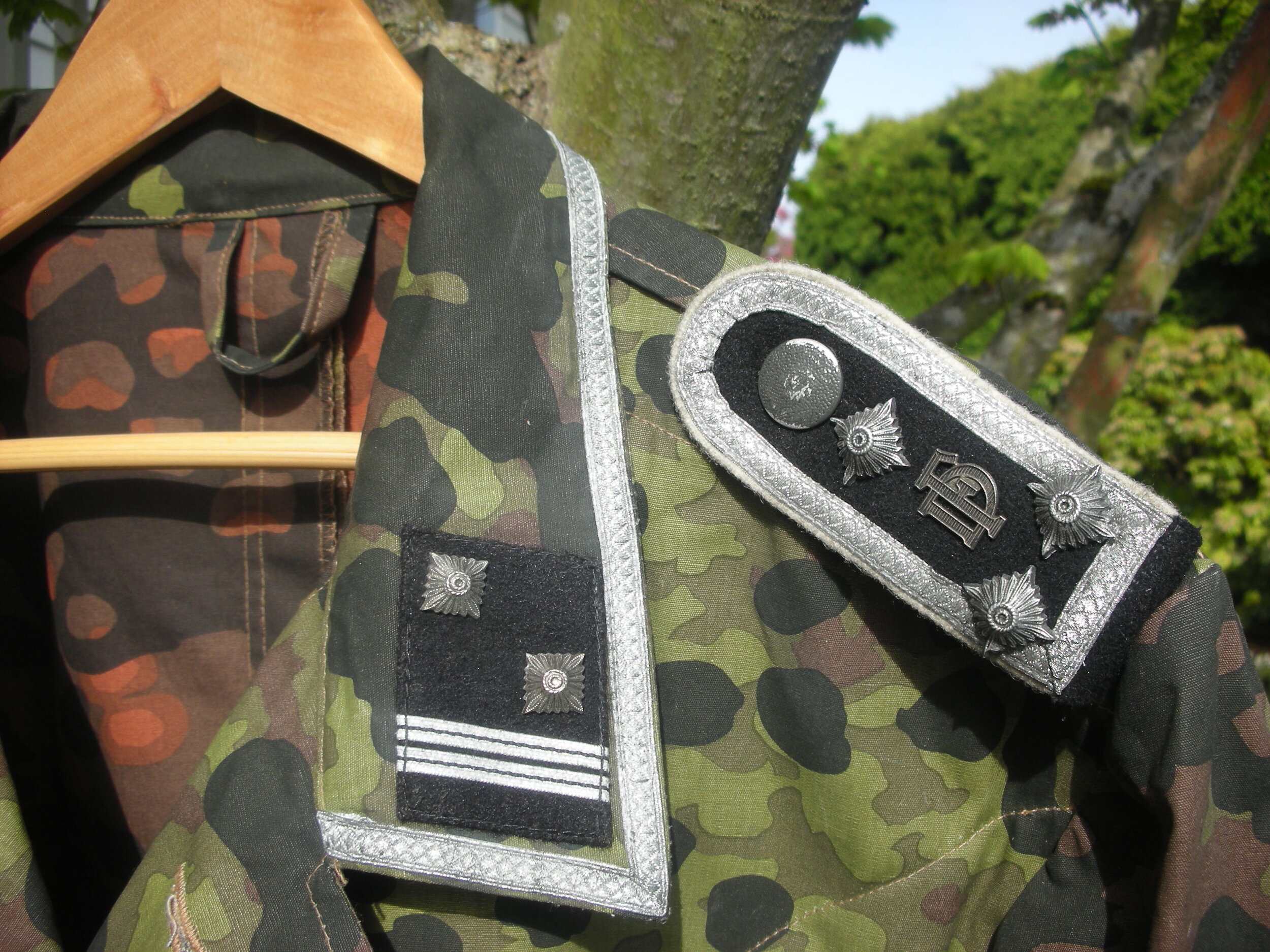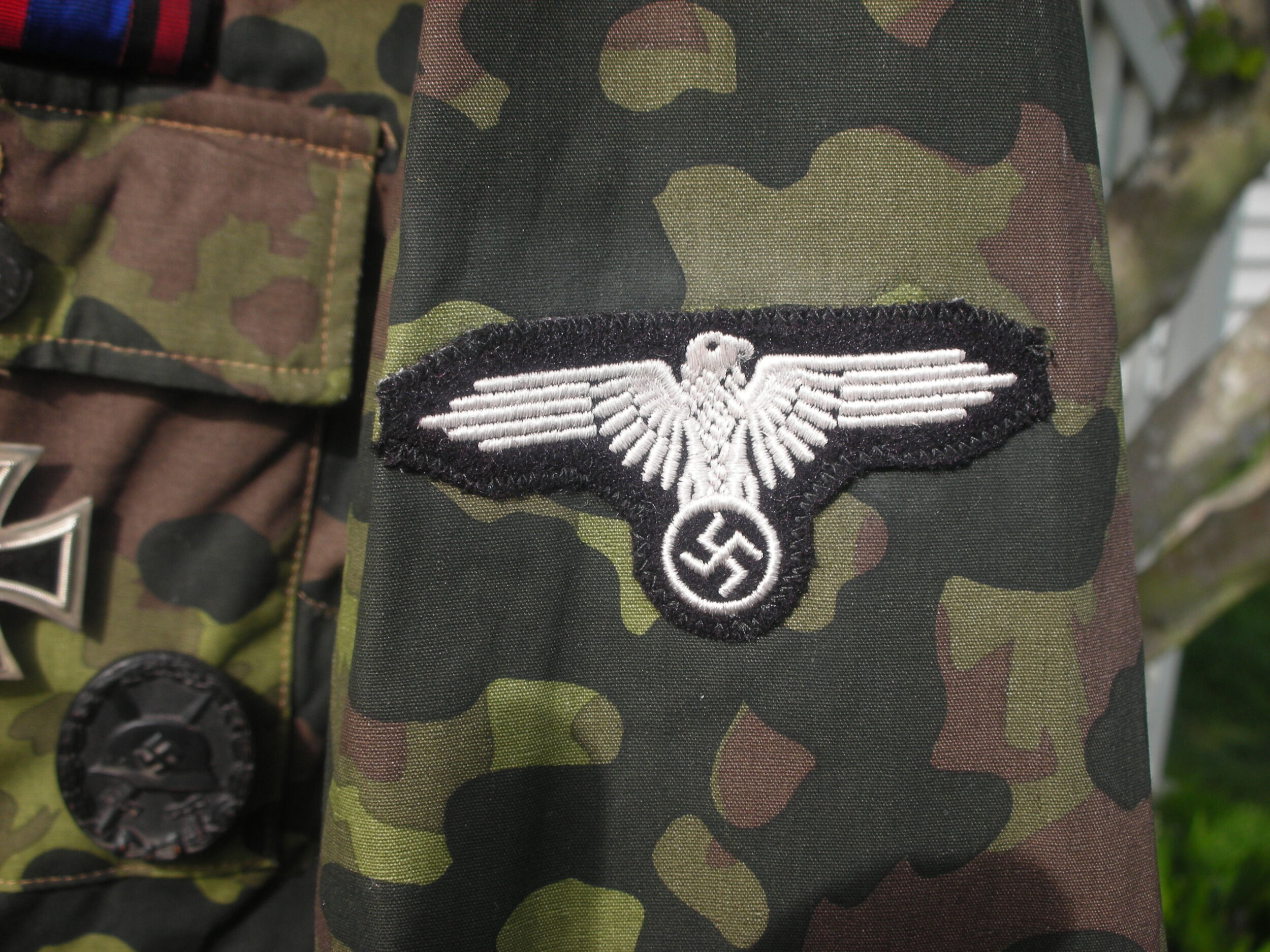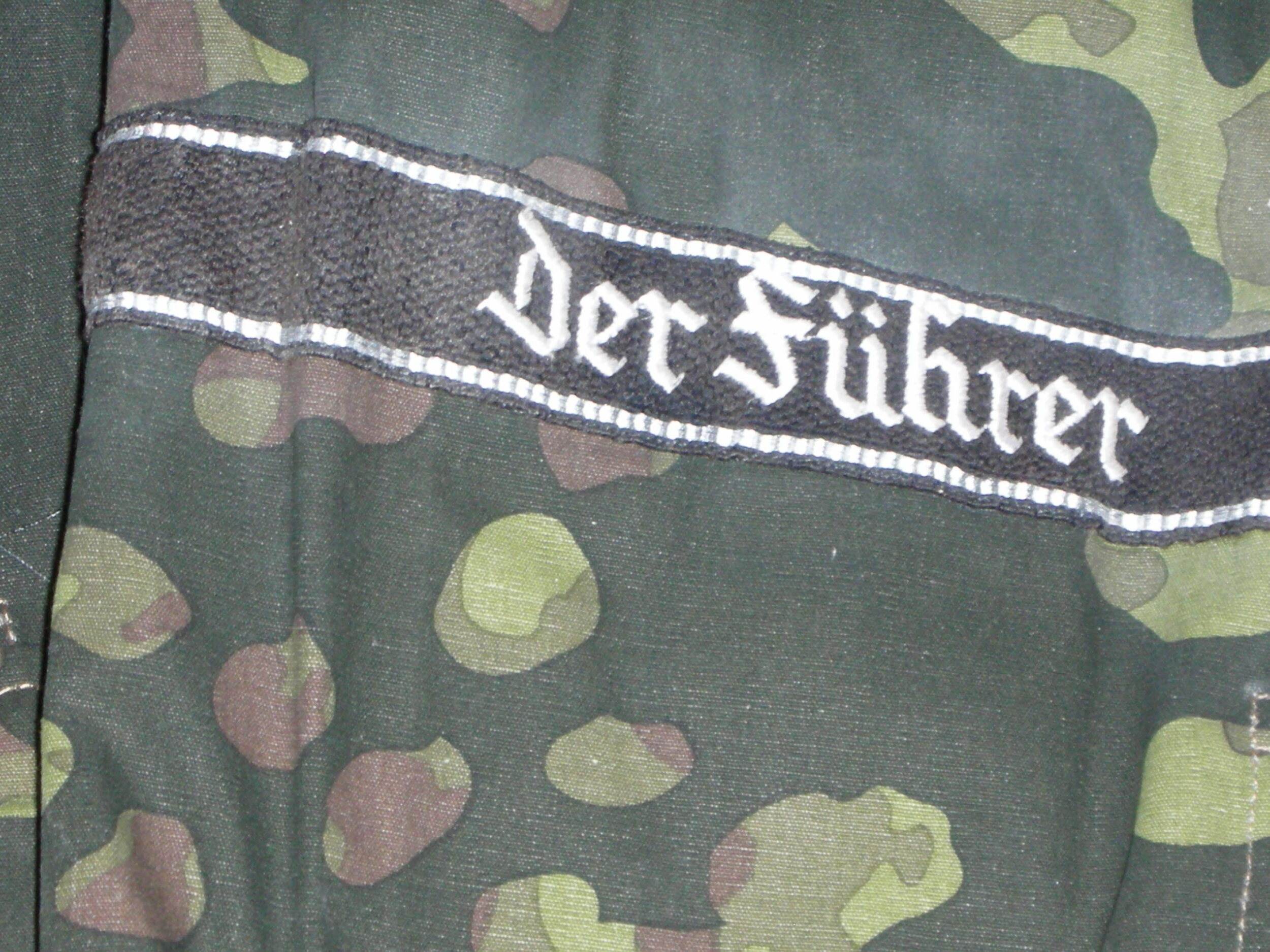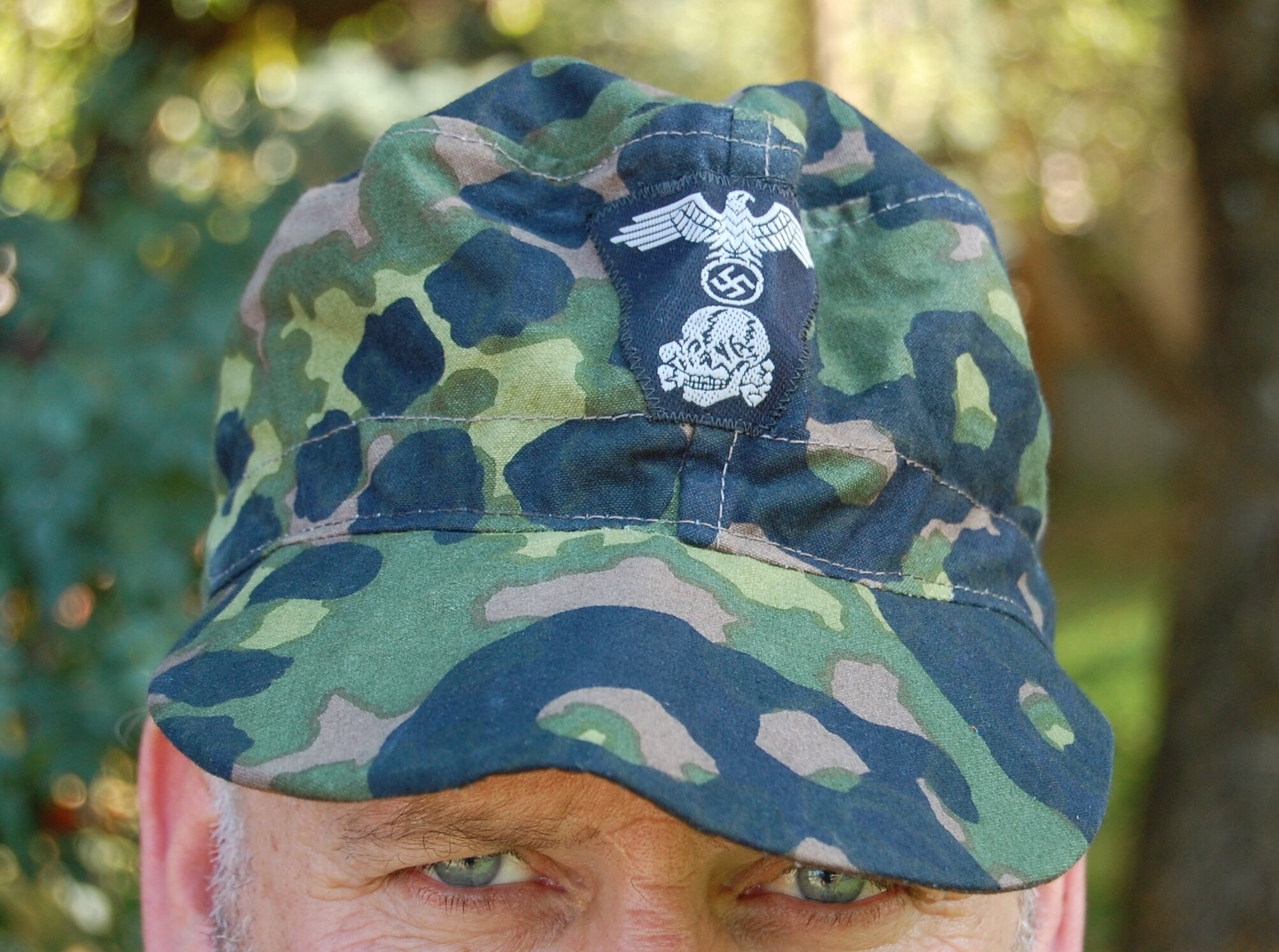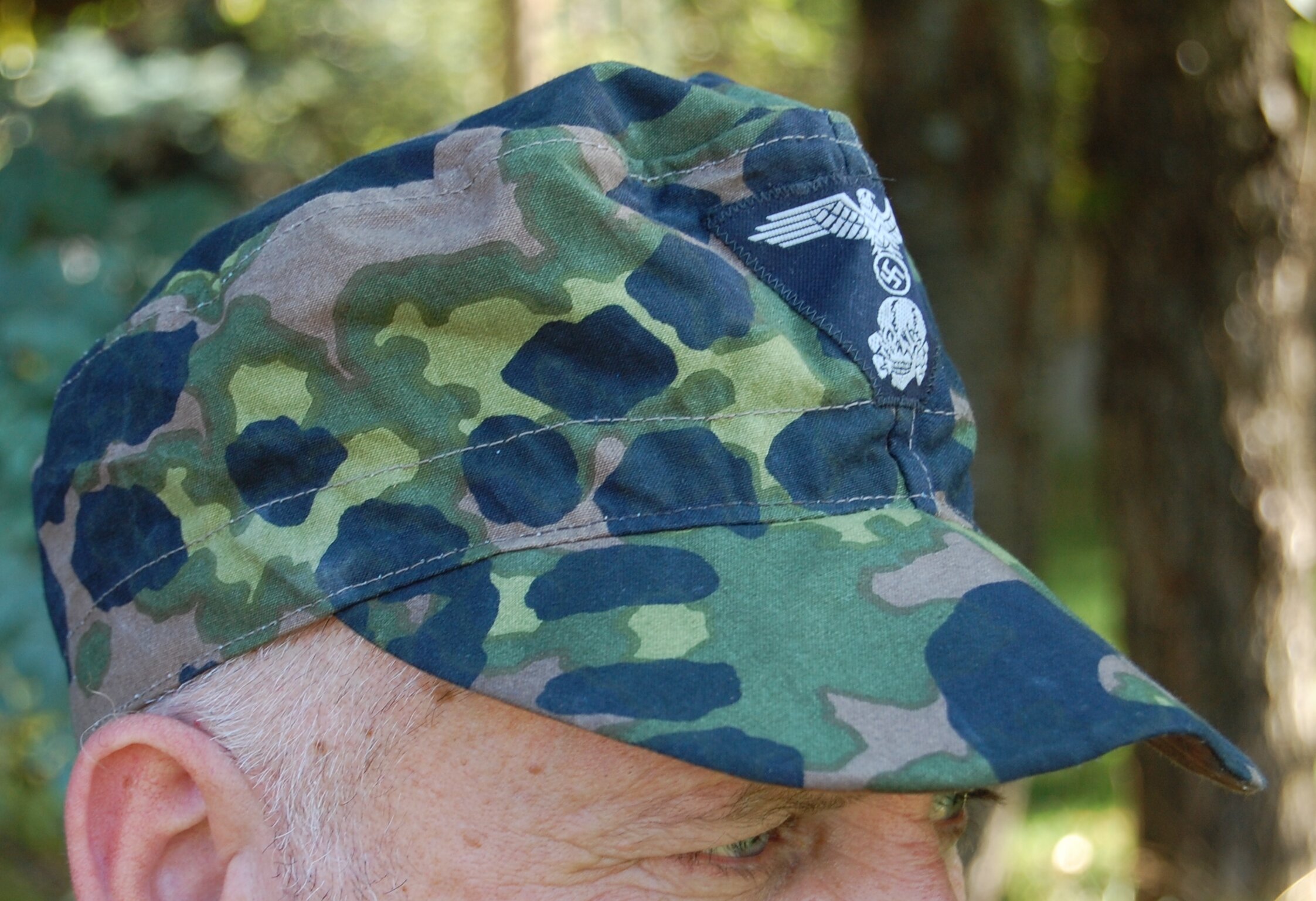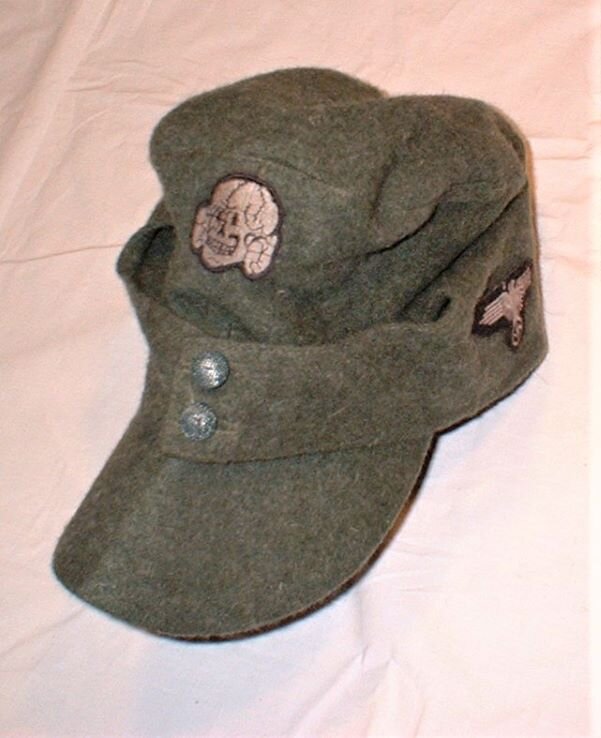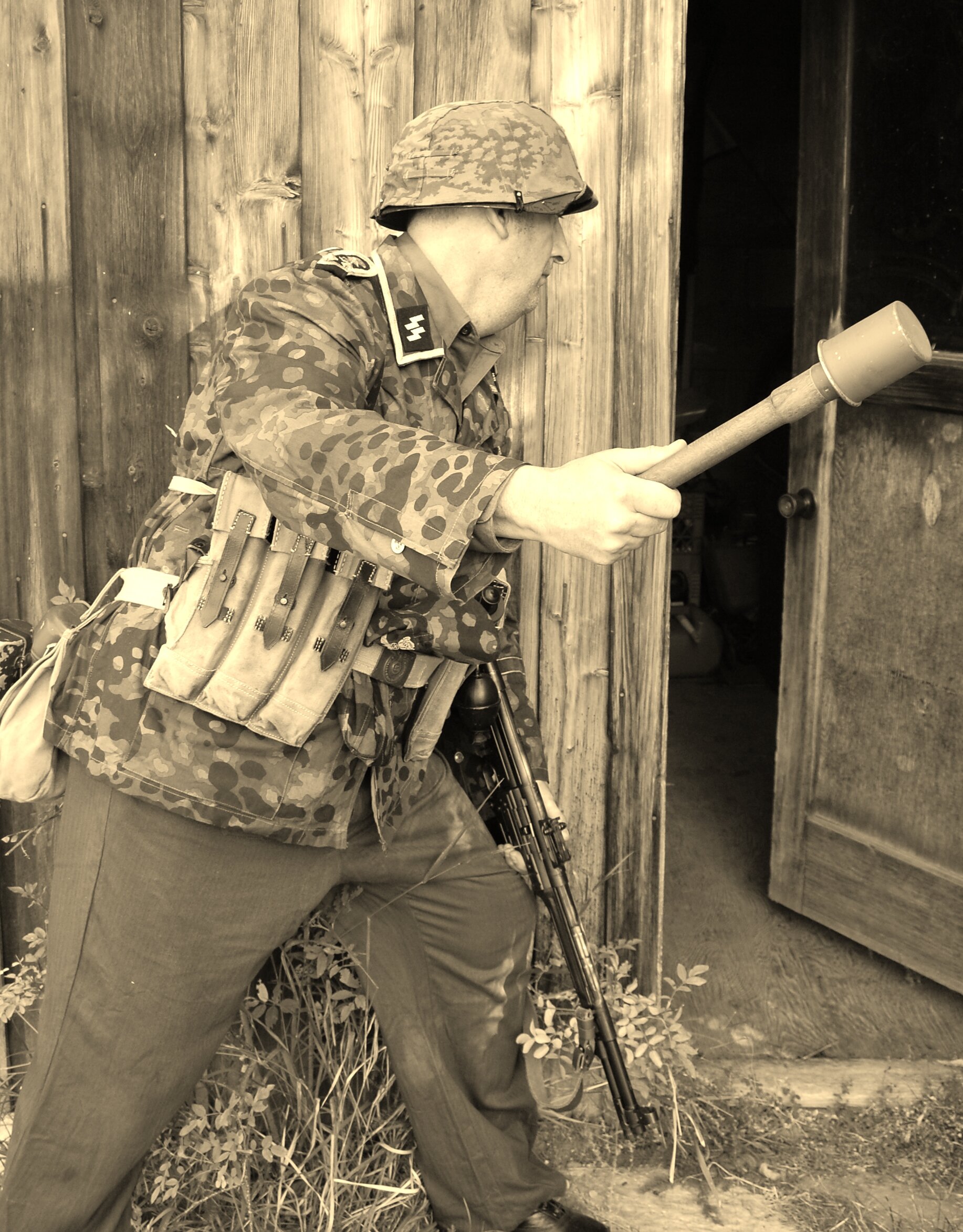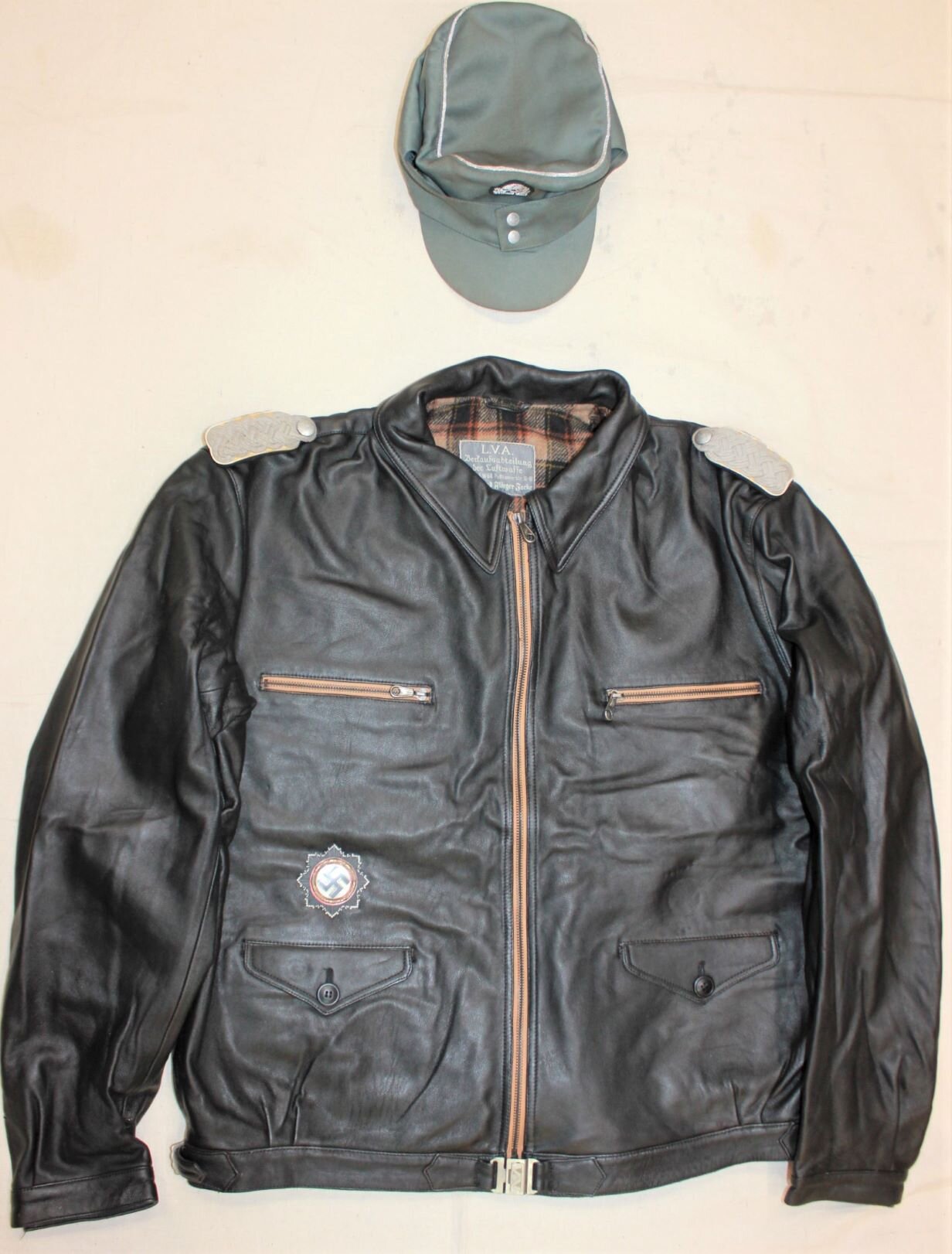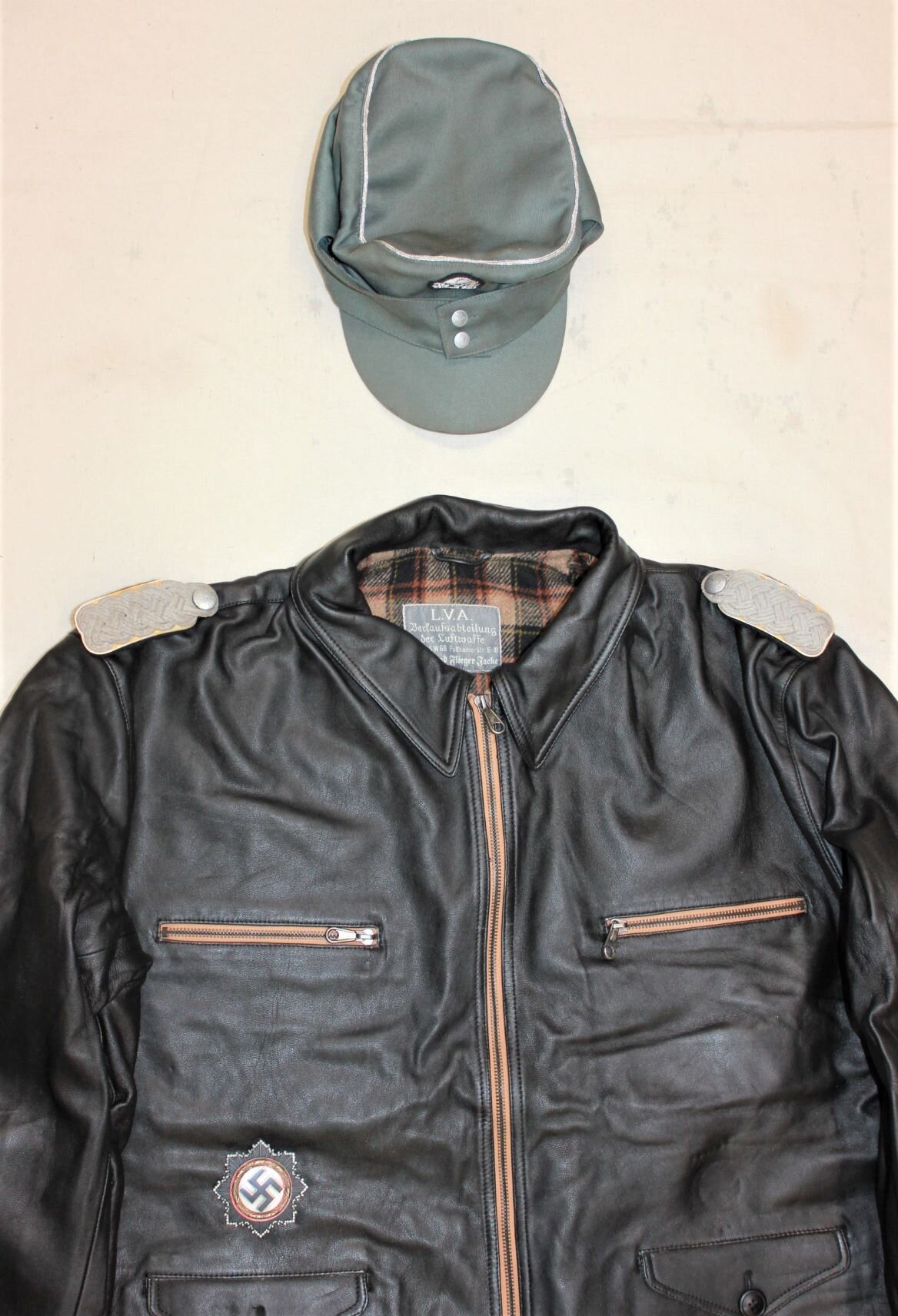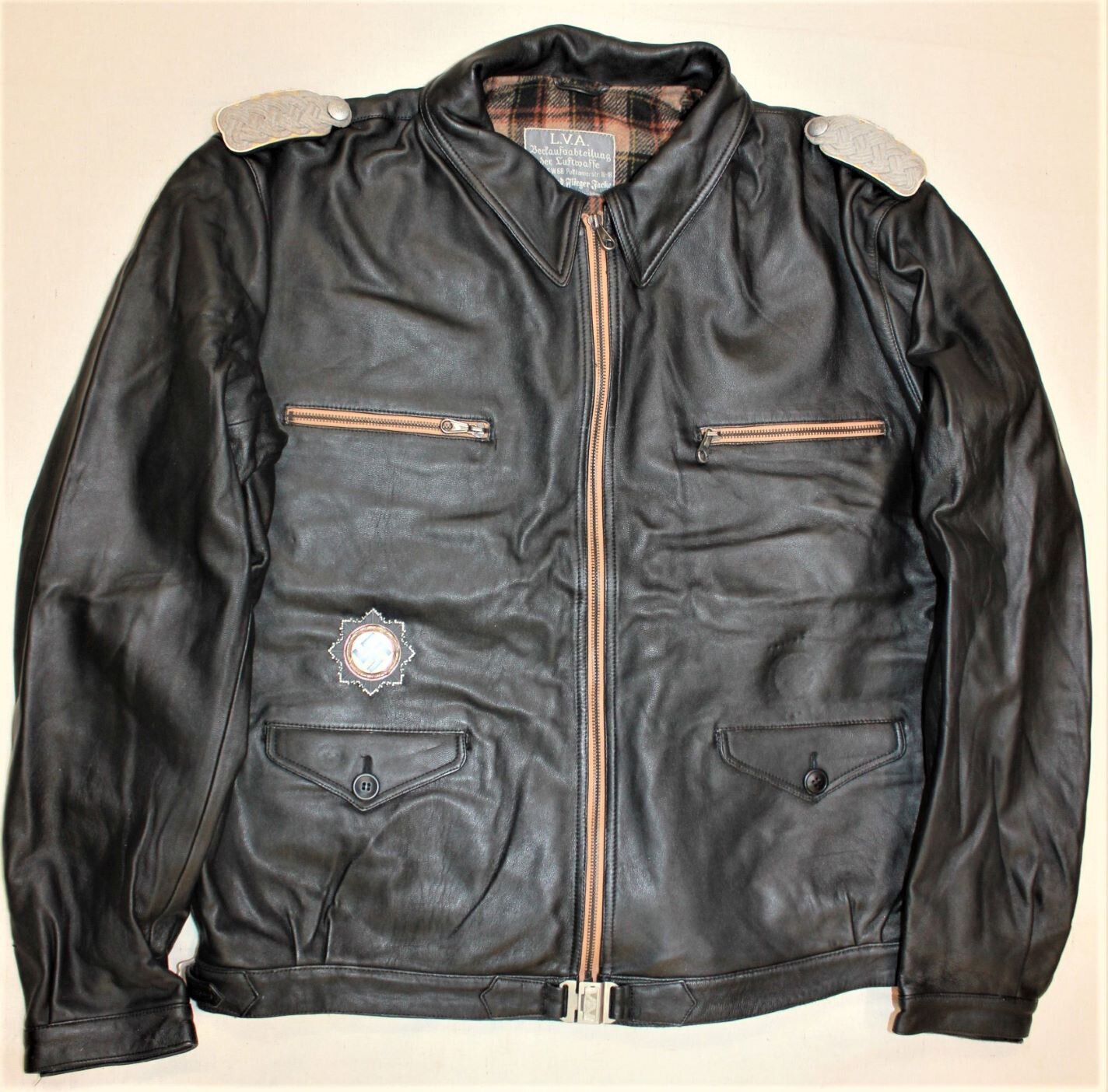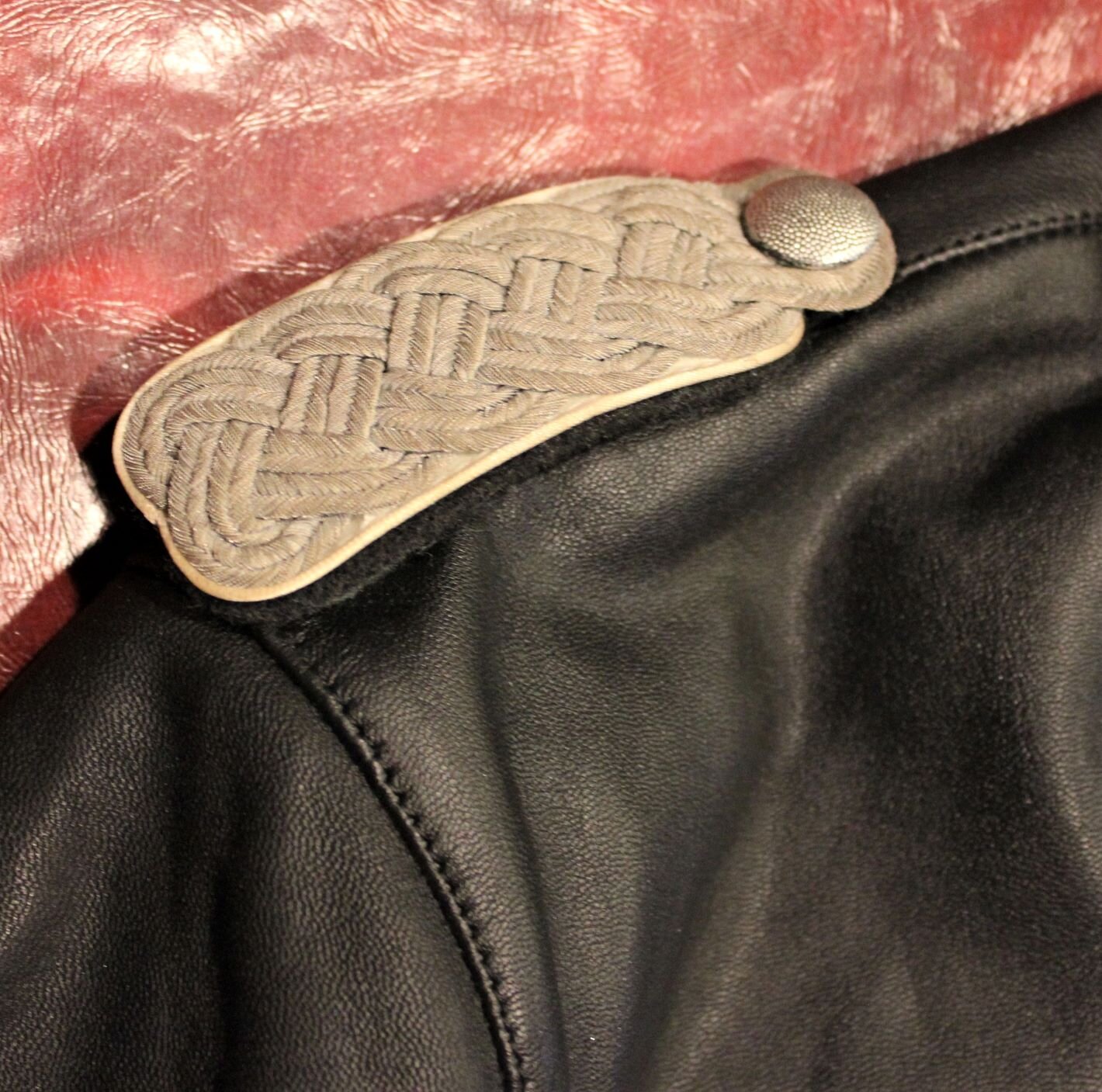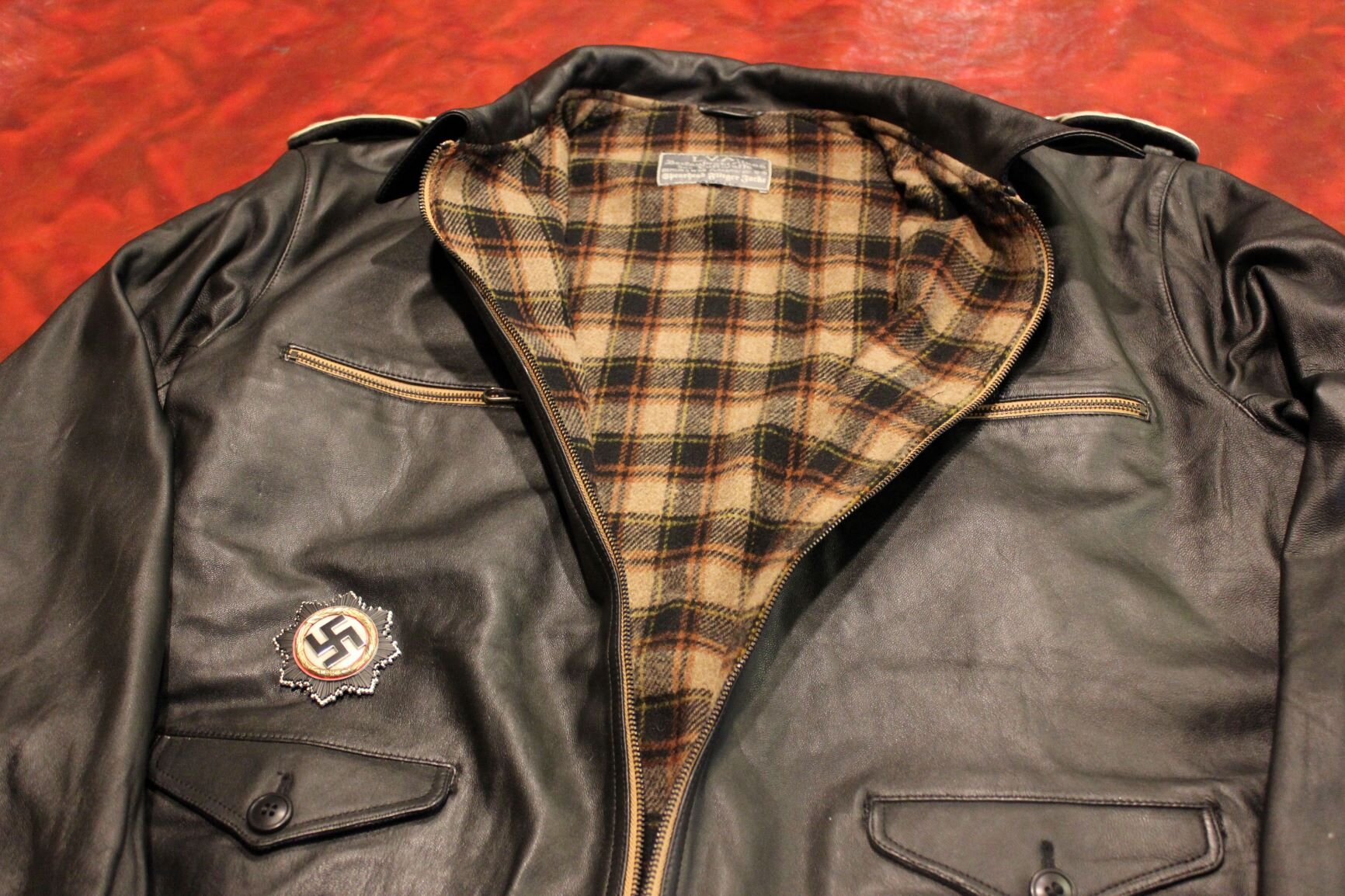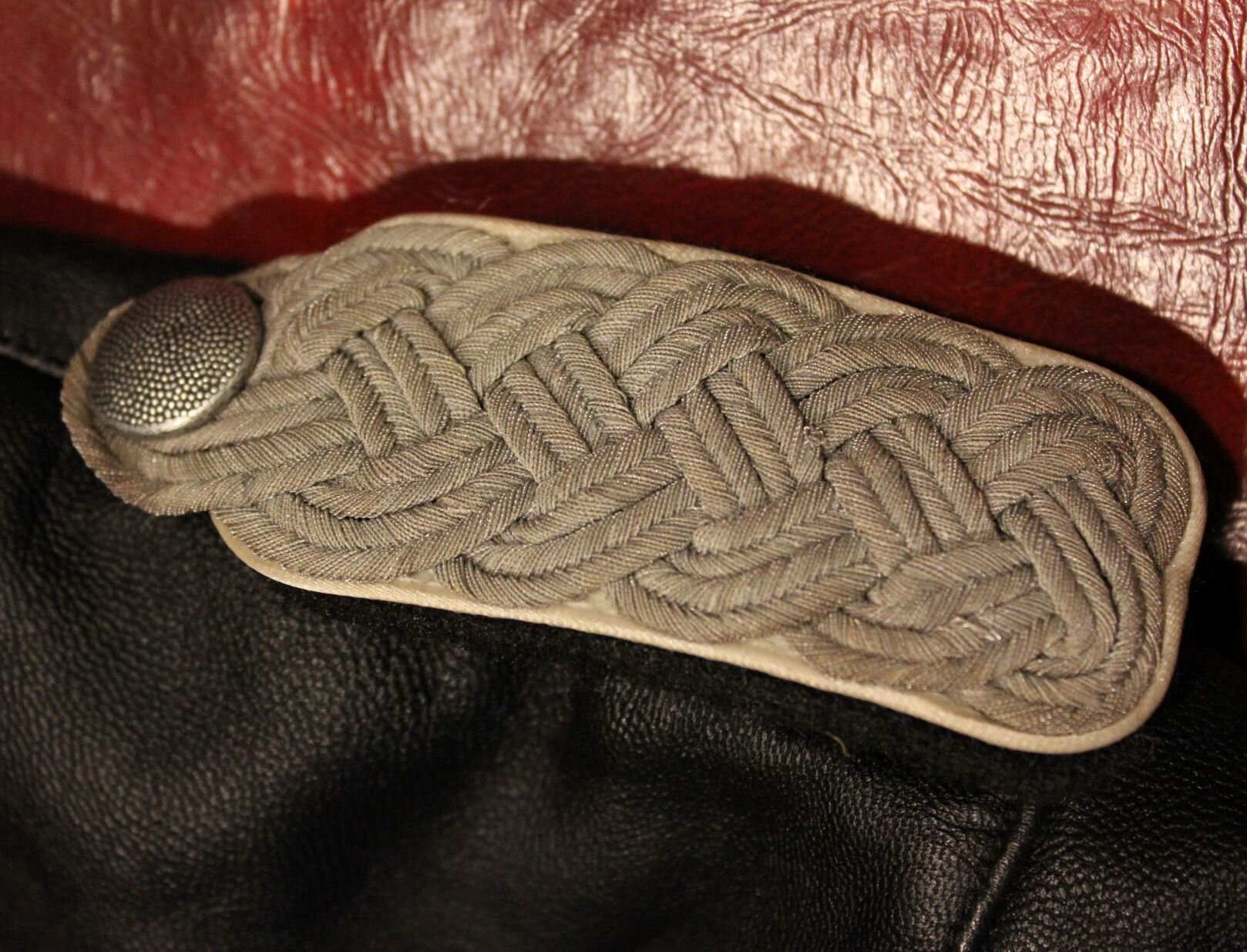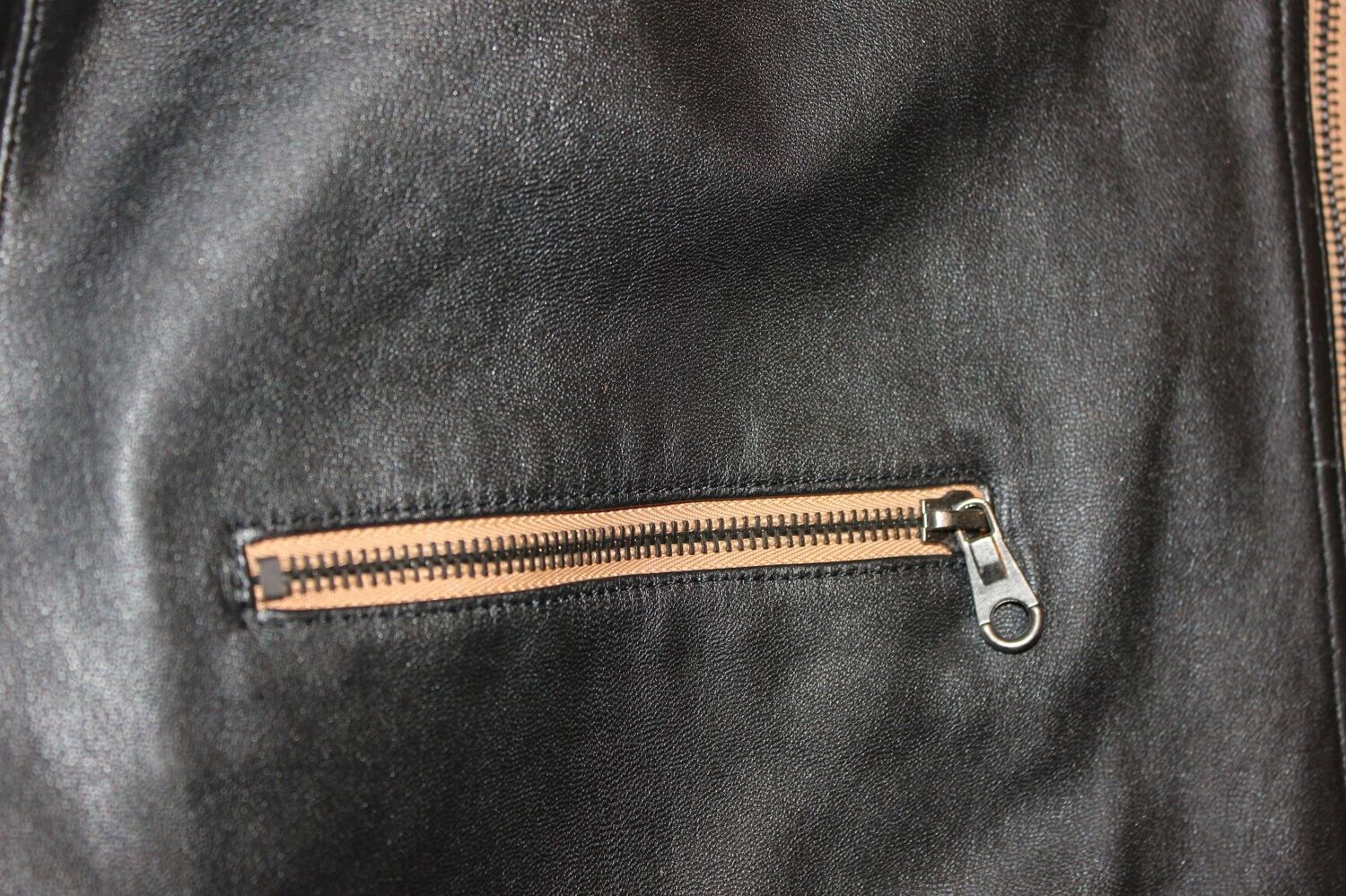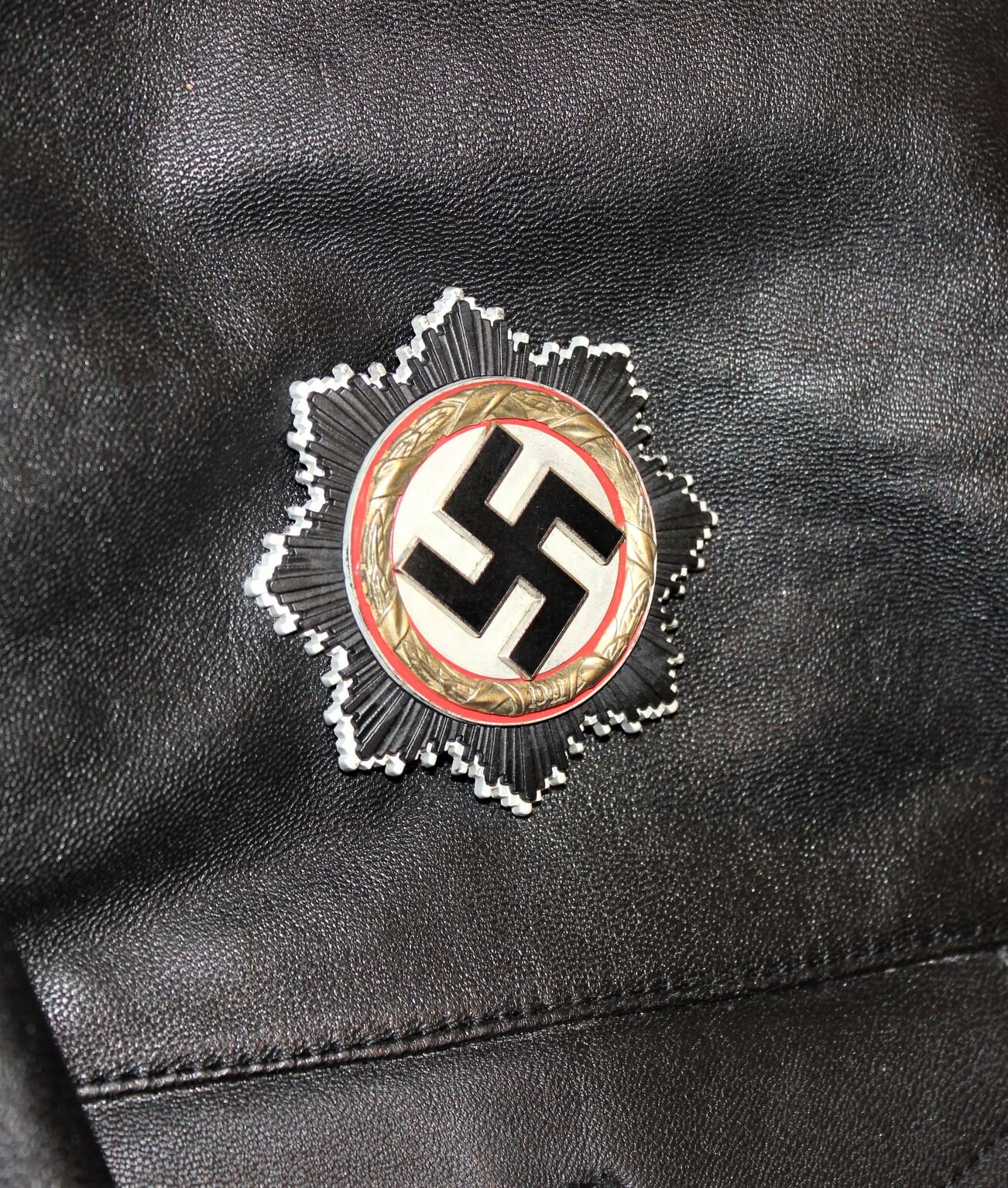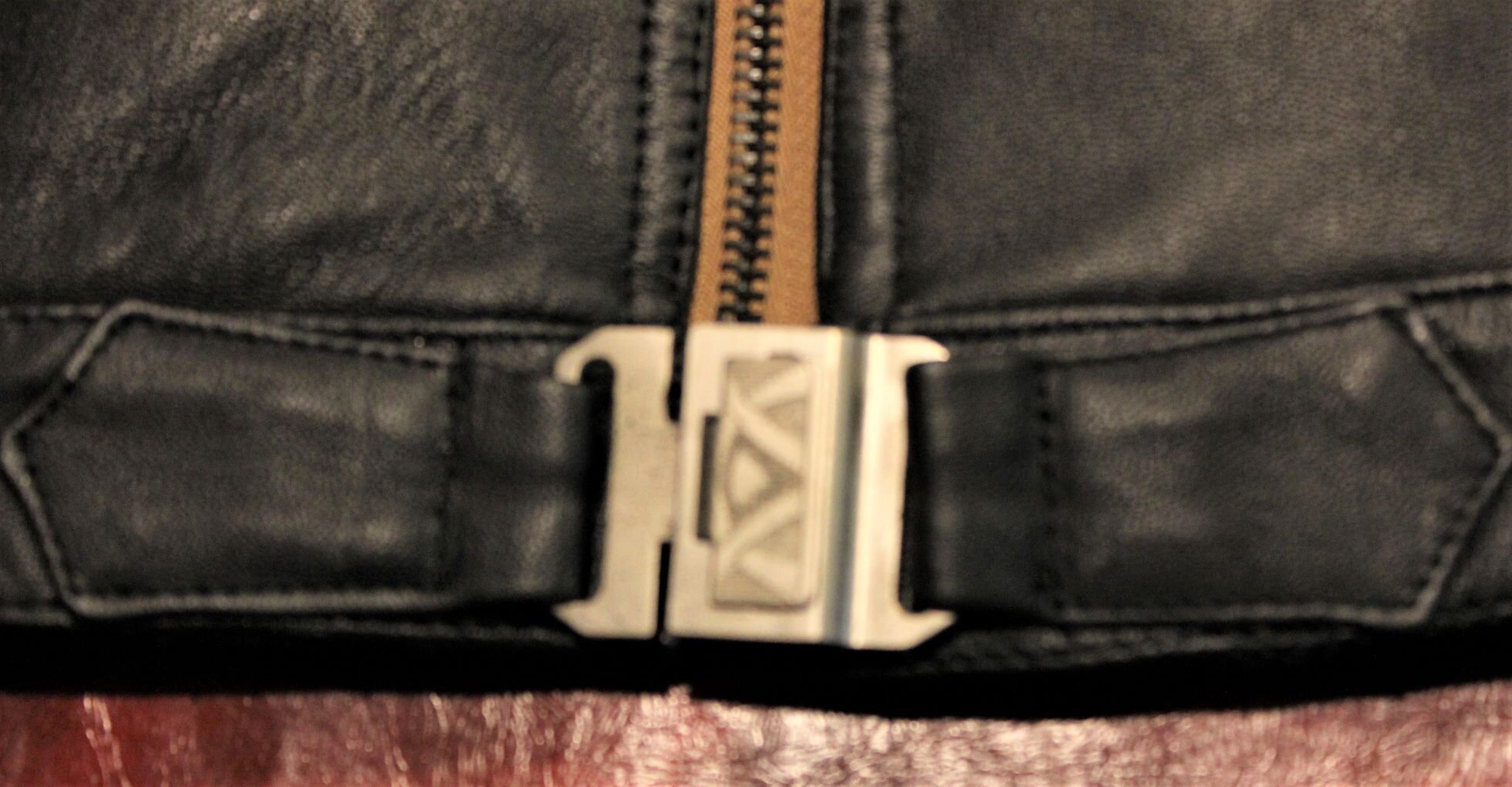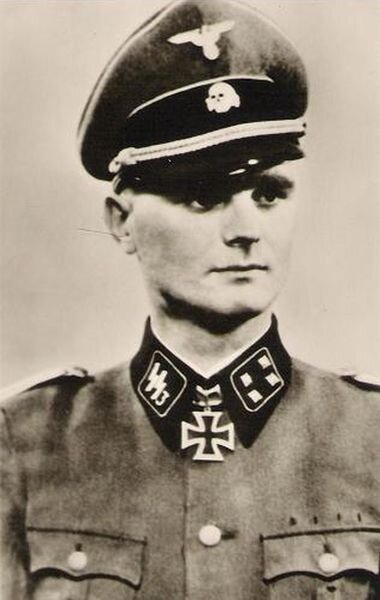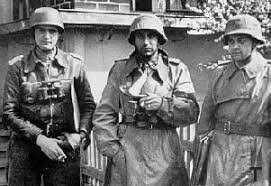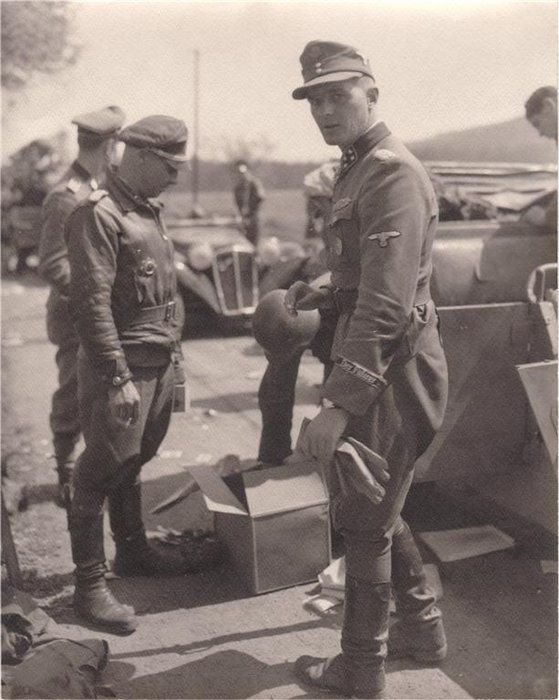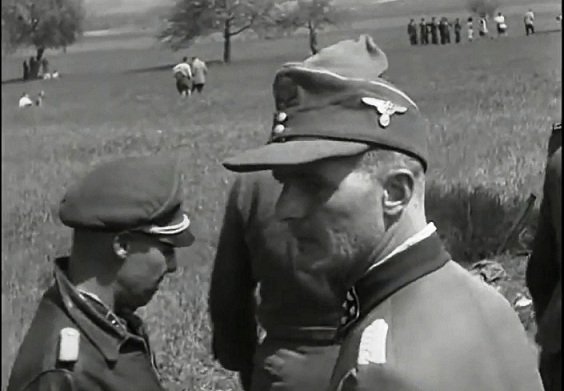‘Der Fuhrer’ 4th SS Regiment:
“Re-Shot” Der-Fuhrer SS-Division, Hauptscharführer Adolf Pietchel:
SS-Hauptscharführer Adolf Peichl was officially credited with the single-handed destruction of 11 enemy tanks and was awarded Das Sonderabeichen für das Neiderkämpfen von Panzerkampfwagen usw. Durch Einzelkämpfer or Single-Handed Tank Destruction Badge during the war. Peichl’s combat leadership was awarded the Eisernen Kreuz II. Klasse in August 1941 and with the Eisernen Kreuz I. Klasse in October 1941. These were followed by the award of the Deutsche Kreuz in Gold in September 1943. Having already earned the points for the award of the Nakampfspange, he was awarded both the Bronze and Silver awards on 22 October 1943 and the Gold four days later! Peichl was one of only 631 Gold awards presented during the war. Peichl was awarded the Ritterkreuz in October 1944 for actions on the Western Front. A native-born Austrian, Piechel joined the SS-Regiment “Der Führer” in Vienna. By the war’s end, he had been promoted to the officer rank of SS-Untersturmführer.
SS-Hauptscharführer Peichl wears an early war production, Heer cut Feldbluse with his Gold Verwundetabzeichen, and three Tank Destruction Awards in place. This may well be his final enlisted uniform. He wears the enlisted version of the old-style SS-Feldütz or crusher with a cloth visor with bevo insignia. He wears standard trousers with marching boots along with an enlisted belt and buckle.
SS-Unterscharfuhrer, Sanitater, Der Fuhrer Regiment:
I’m not finding the story yet for this one again…but it is an M44 cut, HBT material uniform, inch and light-weight, Summer Jacket.
SS-Sturmscharfuhrer, SS-Panzergrenadier Regiment .4 ‘Der-Fuhrer’:
This SS-Sturmscharführer wears one of the early patterns of camouflage uniform produced for the SS. In the M43, cut uniform. predating the widely used M44 SS pattern uniforms. The uniform uses the ‘Spring Pattern’ as the dominant side of the 2 sided material. His ‘RZM’ style Cuff Title dates the uniform to late 1943 while the regiment was still fighting in Russia. While possibly put away during the winter of 43-44, this uniform could well have been in use in Southern France as well and worn through the Normandy Campaign.
An aggressive soldier showing leadership potential at a young age, this SS-NCO has progressed to the highest rank possible and is a senior NCO in the regiment. He has served in the pre-war occupation of Austria and the first year of the campaign in Russia, wearing both awards on his uniform. He has also shown combat leadership by winning the EK-I and EK-II, as well as the War Merit Cross with Swords. He has earned the Infantry Assault Badge many times over, as shown by the Close Combat Clasp, and he has been wounded.
The uniform, the camouflaged cap and helmet cover, Plane tree / Blotch Camouflage smock, Reed Green HBT Trousers, gray shirt, and shot boots under standard field gear and ammunition pouches.
Ritterkreuzträger, SS-Sturmbannführer, Heinz Werner, “Der Führer Regiment”:
Heinz Werner joined the Waffen-SS like many others wanting to be with the “Elite outfit” in 1937, volunteering with the III/ SS Regiment “Germania”. Selected as an “Officer Candidate”, he attended the SS-Junkerschule at Bad Tolz from November 1939 to October 1939. On November 9 1939, he was promoted to SS-Unterstrum-führer and took command of a platoon in the 6./ SS-Regiment “Der Führer”.
Werner fought in the Battle of France, then he served in the Balkan Campaign. In June 1941, he took part in the invasion of Russia, where on the 24th of June, he was promoted to SS-Obersturmführer. In August 1941, he took command of the 13th Company of the SS-Infantry Regiment “Der Führer”. For his bravery in the battles at Kharkiv and then at Kursk, he was awarded the “German Cross,” and in April 1943, he was promoted to SS-Hauptsturmführer. From December 1943 to June 1944, he was the Adjutant to Panzer-Grenadier Regiment 4 and was the leader of the III. Battalion of the Regiment.
With the invasion of France, Werner fought along the Croatian Peninsula and the breakout of the Falaise Pocket. On the 23rd of August 1944, he was awarded the Knight’s Cross of the Iron Cross. On 9 November 1944, he was promoted to SS-Sturmbannführer, and then in December was involved in the “Battle of the Bulge.” After its collapse, he was engaged in the battle of Hungary in 1945. He was awarded the Oak Leaves and the Knight’s Cross on May 6, 1945, by Sepp Dietrich. Werner survived the war, but as a prisoner of the French Government, only being released in June 1951, he Passed Away on 8 March 1978 in Essen.
Note: the first “Period” picture at the bottom shows Werner’s official portrait taken when he received the Knights Cross”, the “Oak Leaf” has been painted in (a common practice at the time) as he was not available for a new photo at the time, and this was used for the propaganda pamphlets. The Second photo shows him wearing the “Luftwaffe, Fligger-Leather jacket with the German Cross sewn to it, with the SS-National Insignia, and he’s wearing (oddly) a Fallschirmjager helmet at the time, and the Third and Fourth pictures are from the time of his surrender.
The Leather flight jacket was an oddity and was a very unique and unusual piece of gear, especially for an SS officer. It may have been given to him by the regimental commander or perhaps as a gift from the troops or homes. A warm jacket is a practical point of view, but the reason for the jacket has been lost to history. He is also seen with the jacket with a more common officer an M-43 cap, with both cloth insignia (at the time), and metal insignia when he surrendered.







